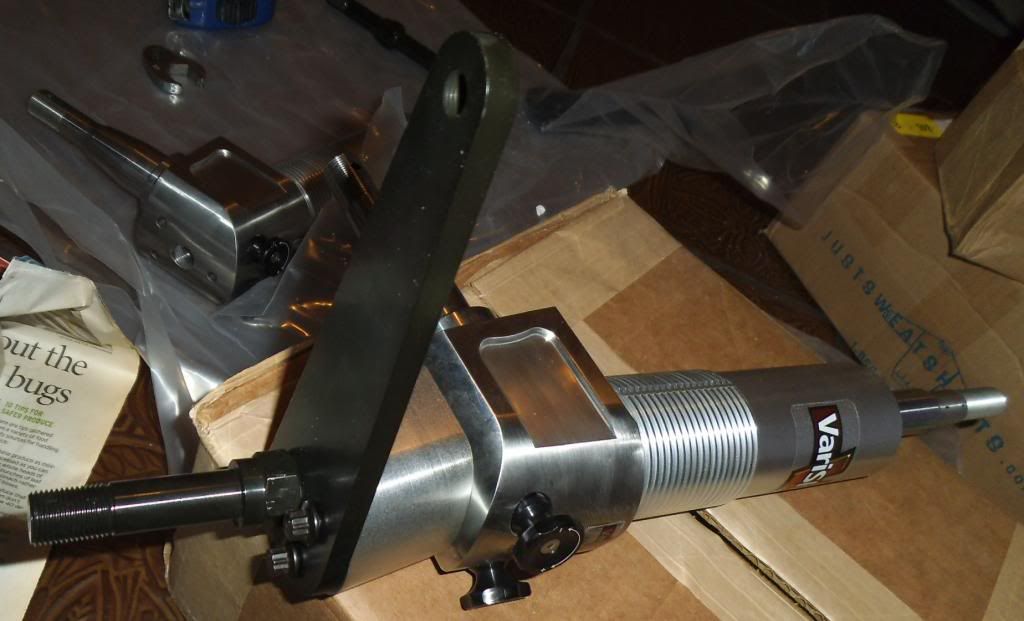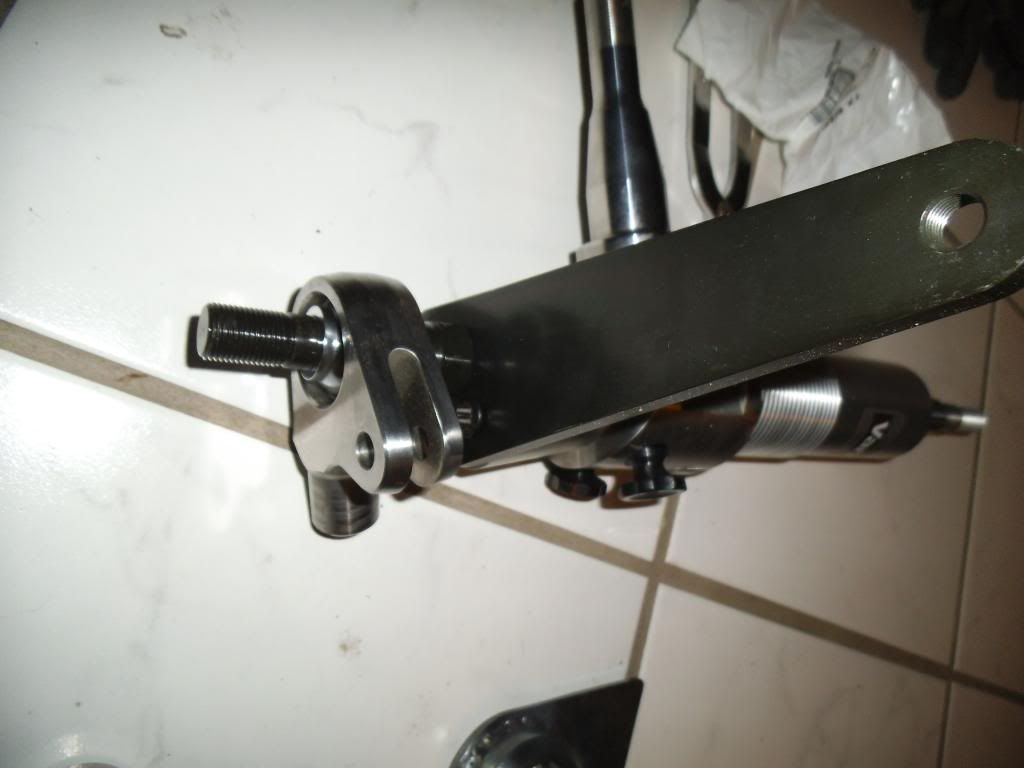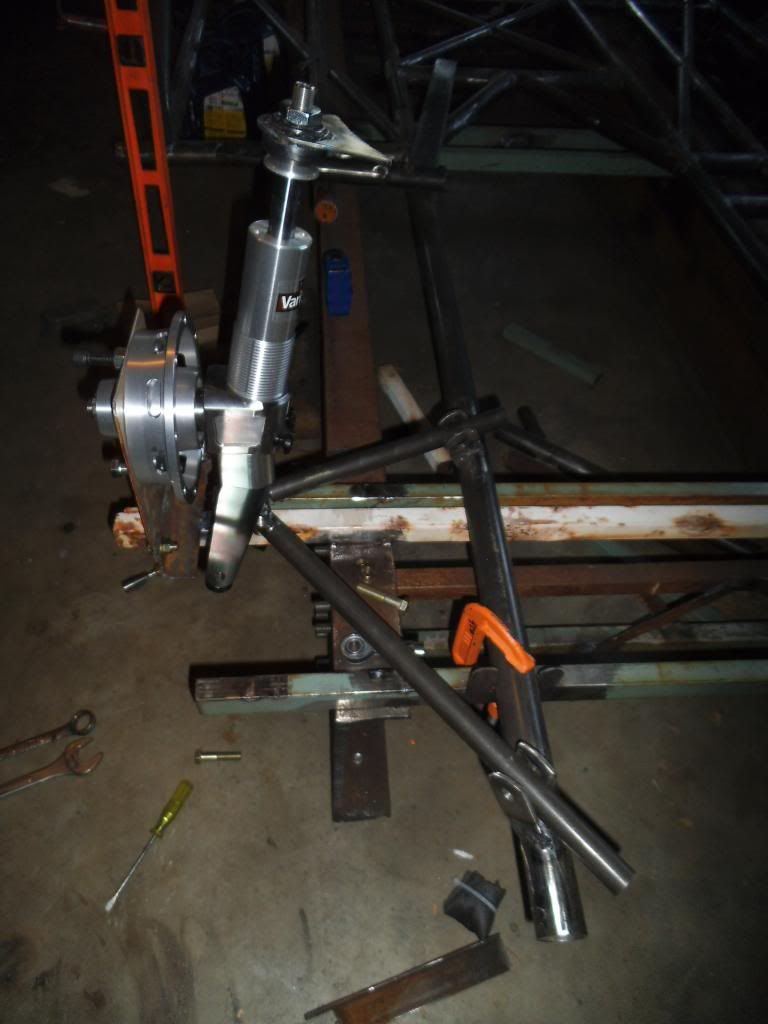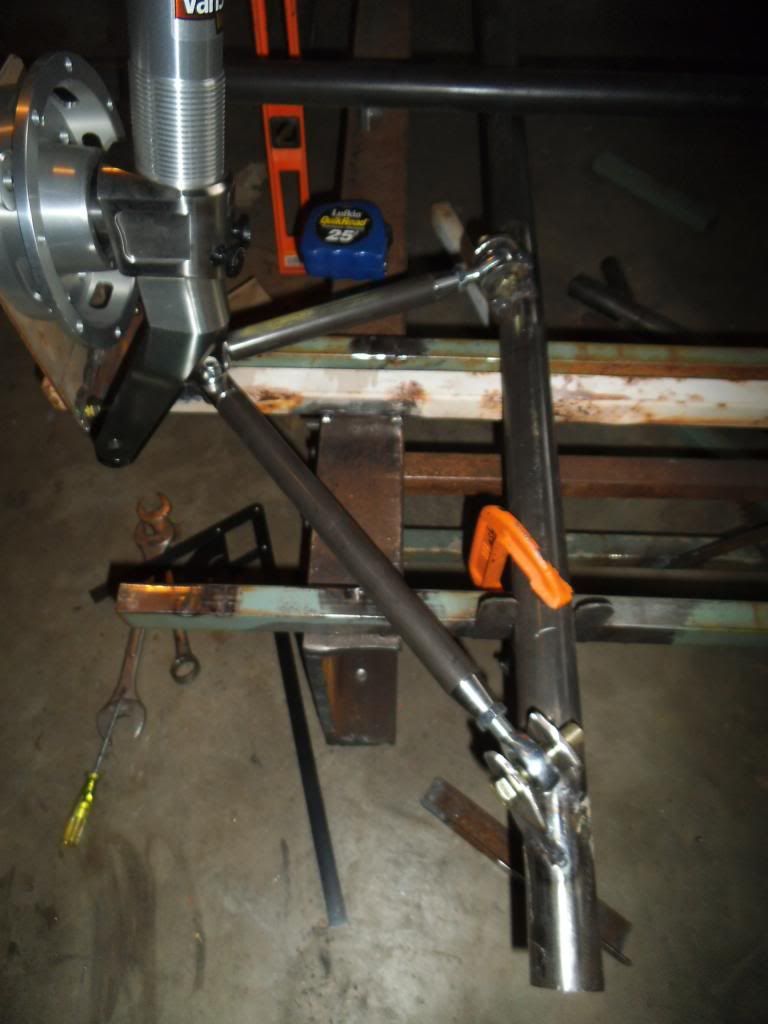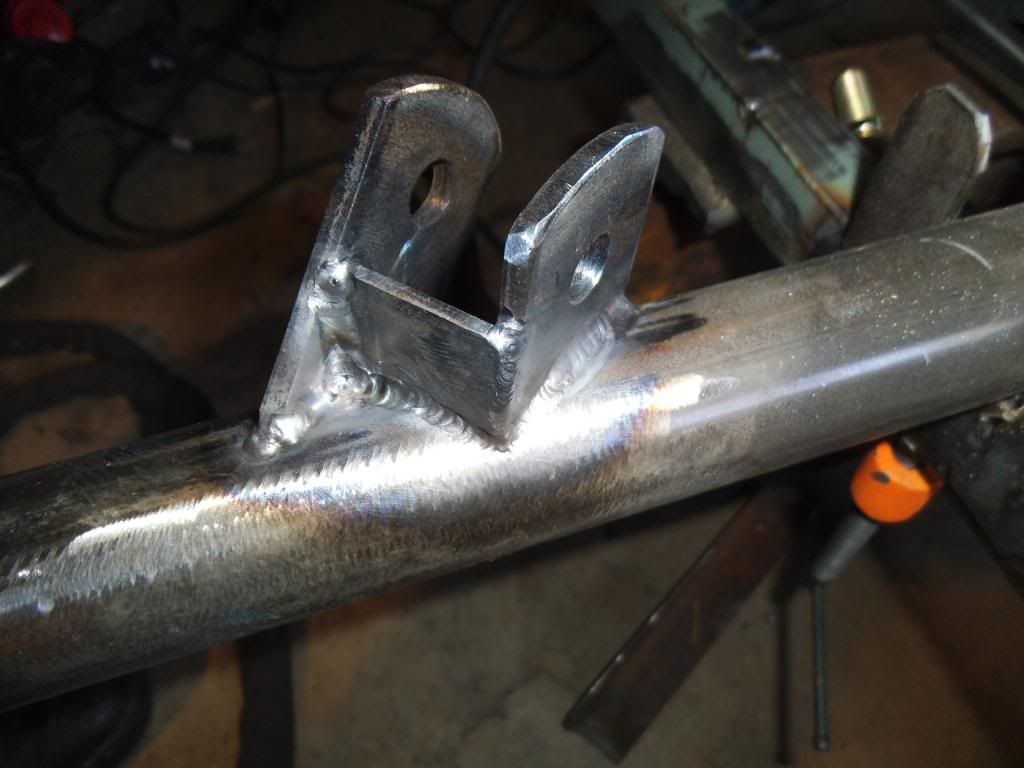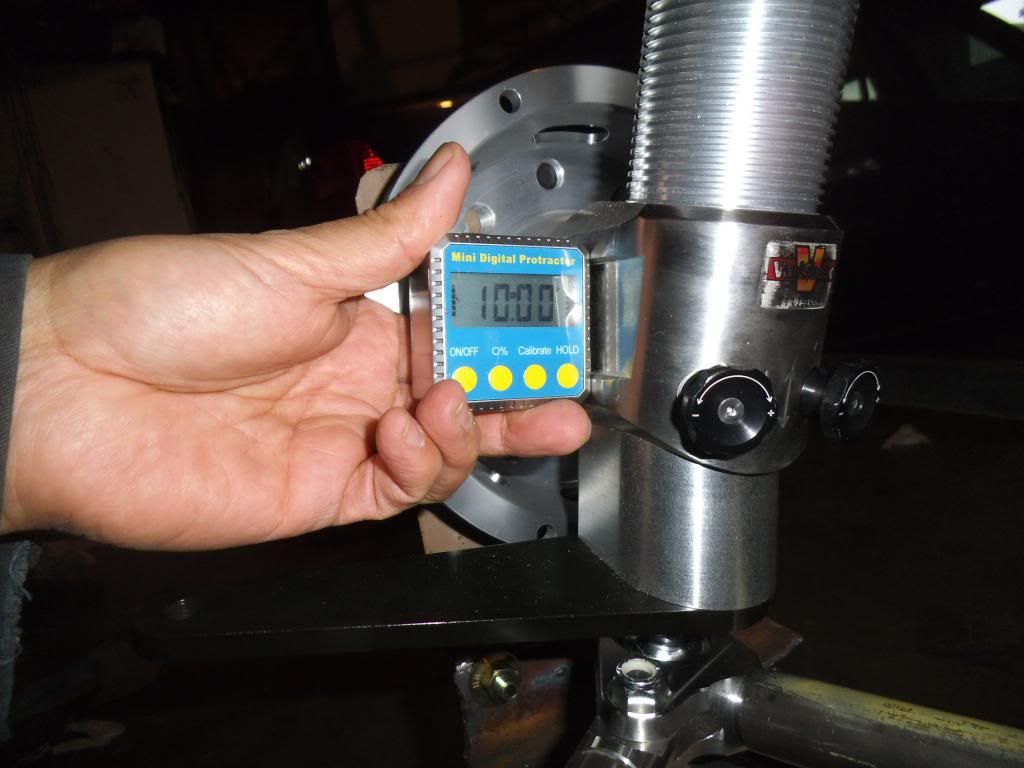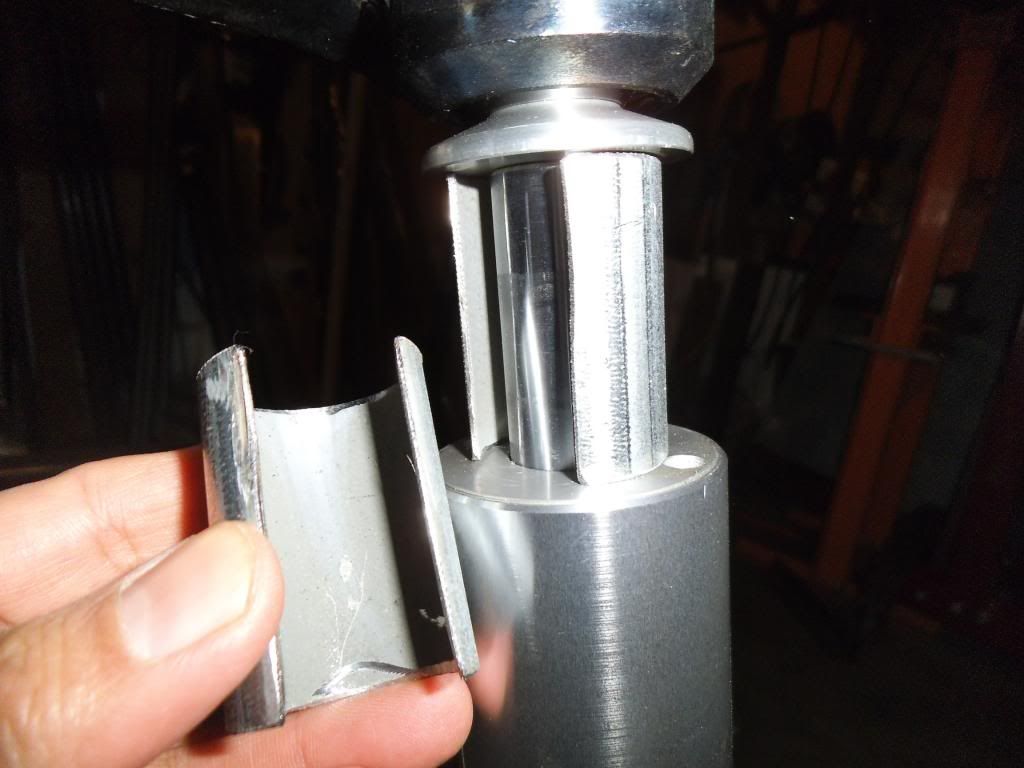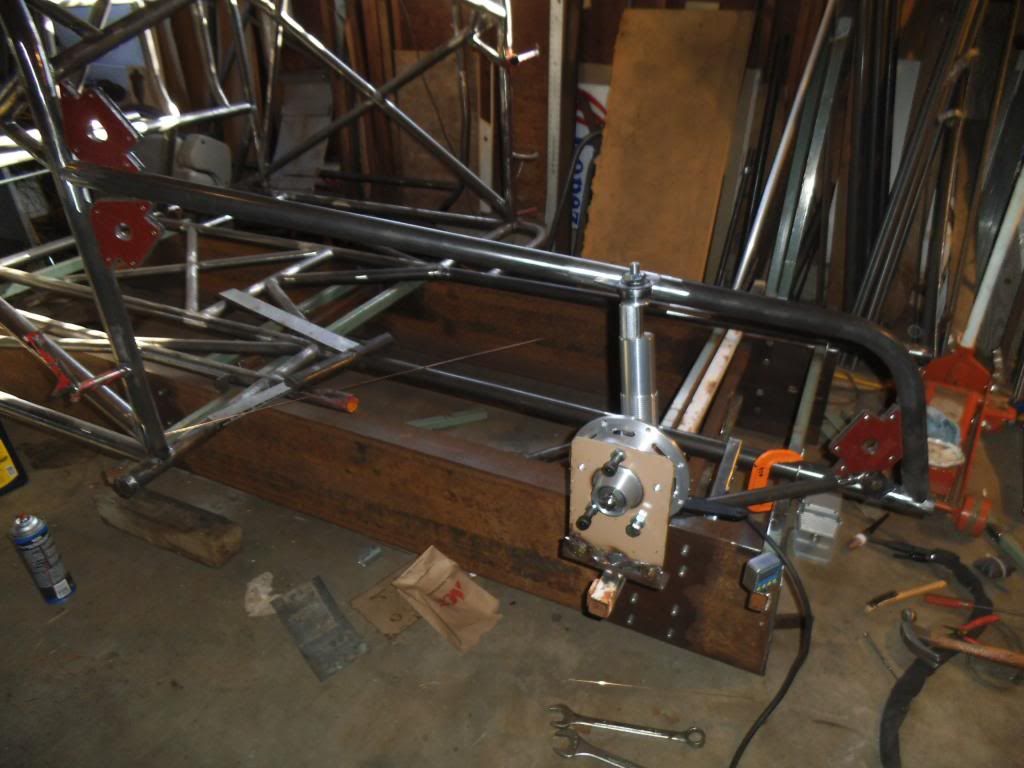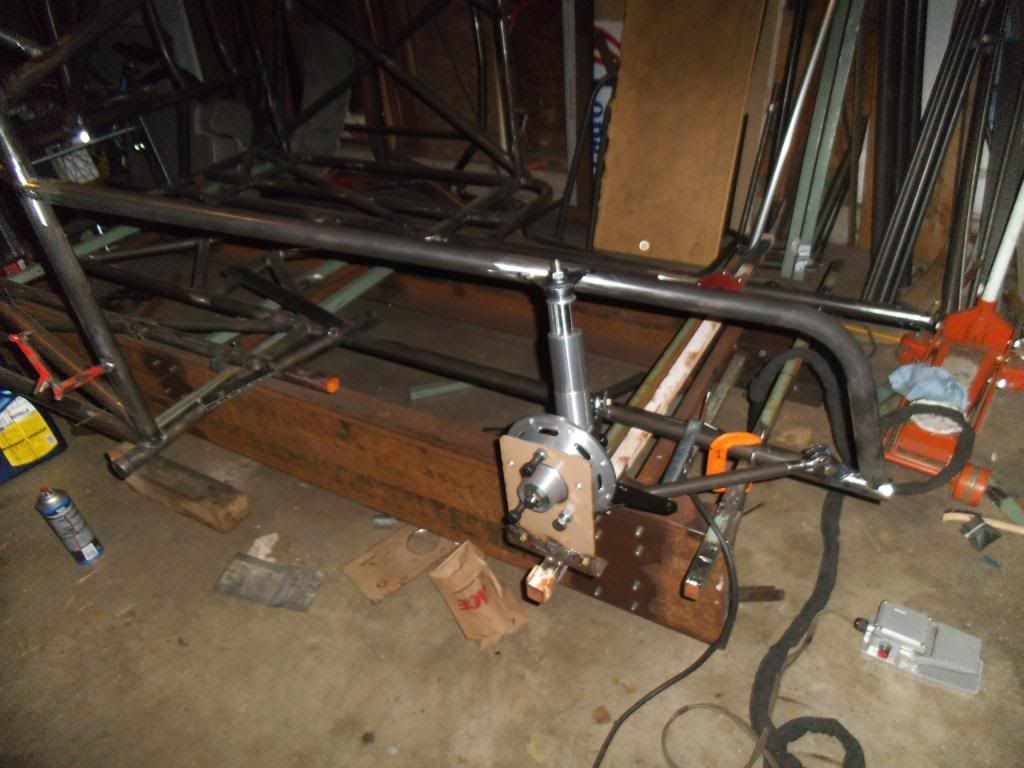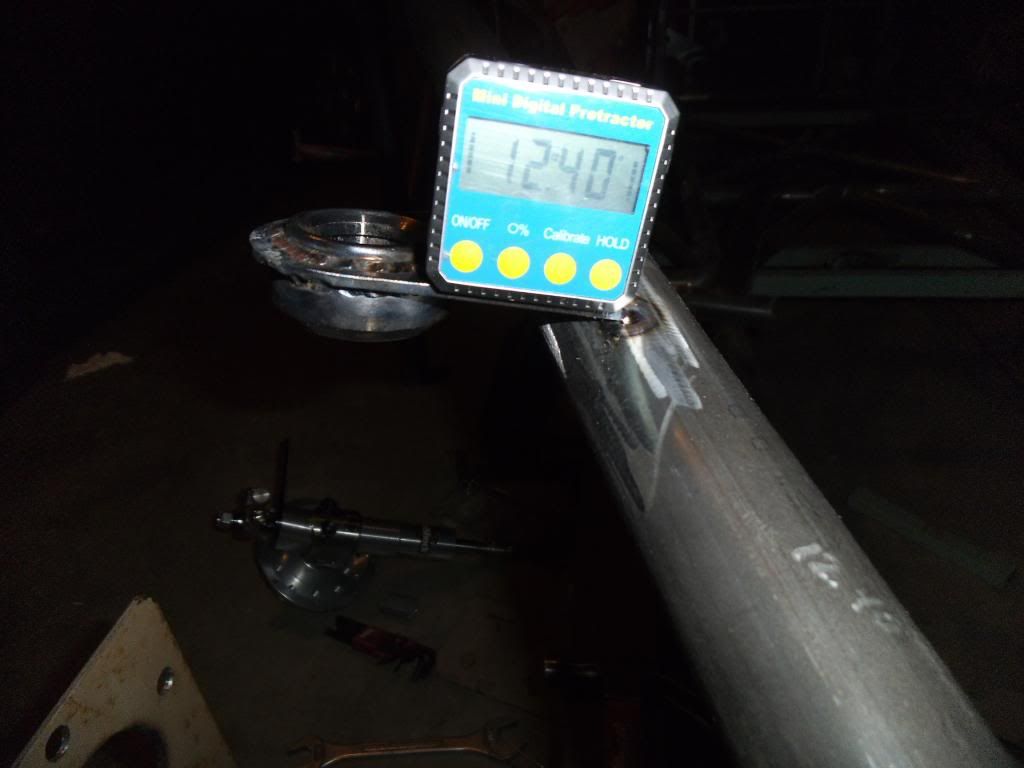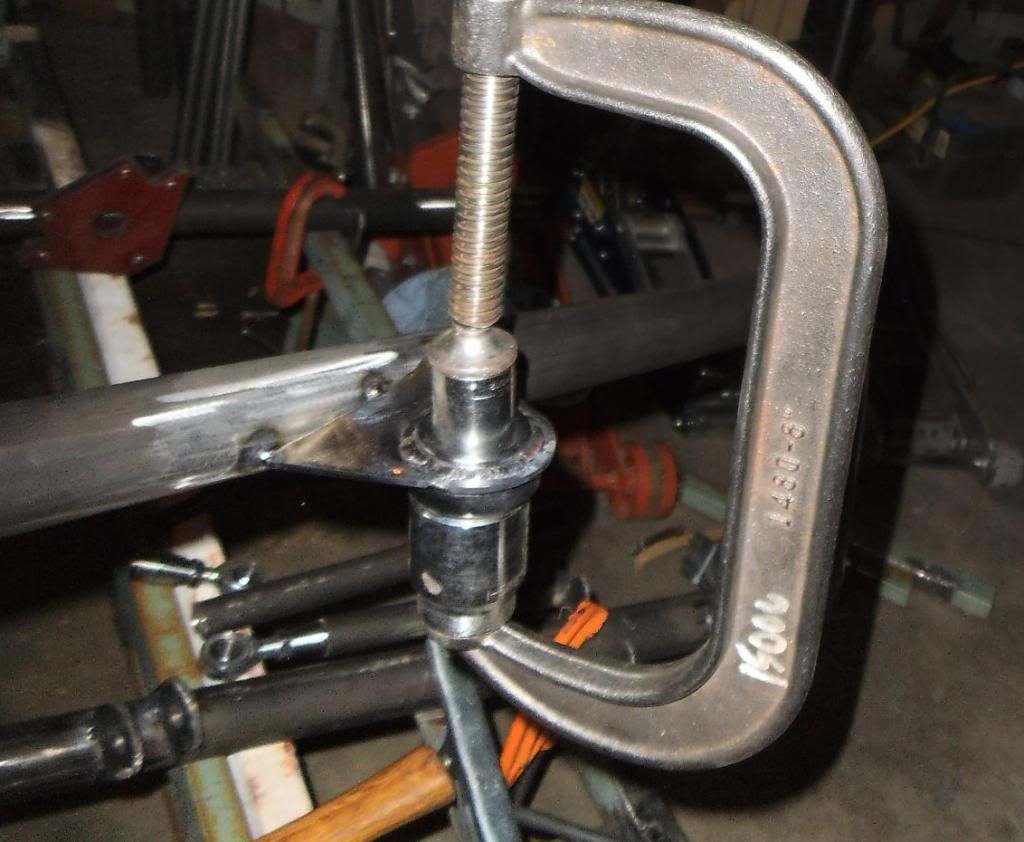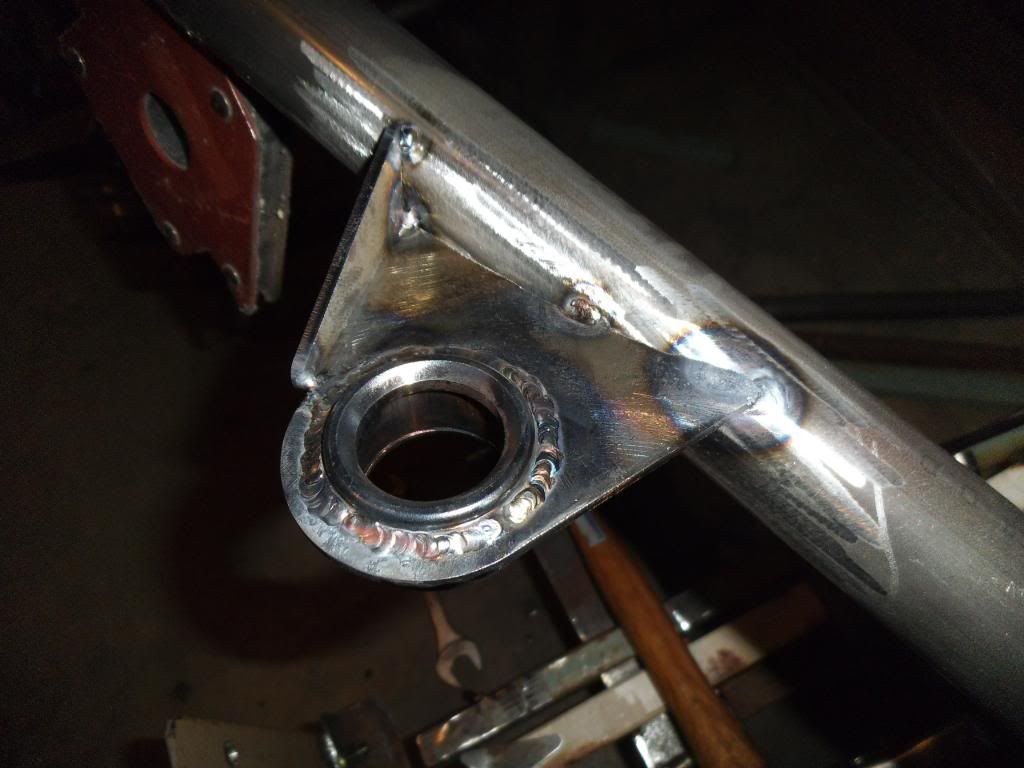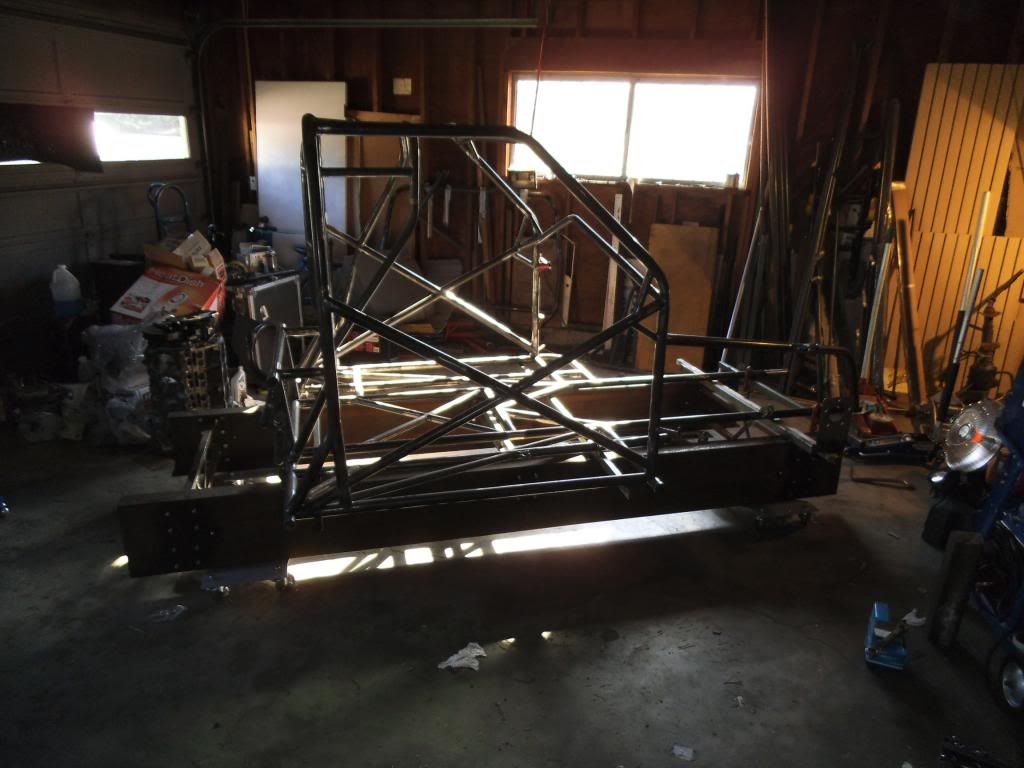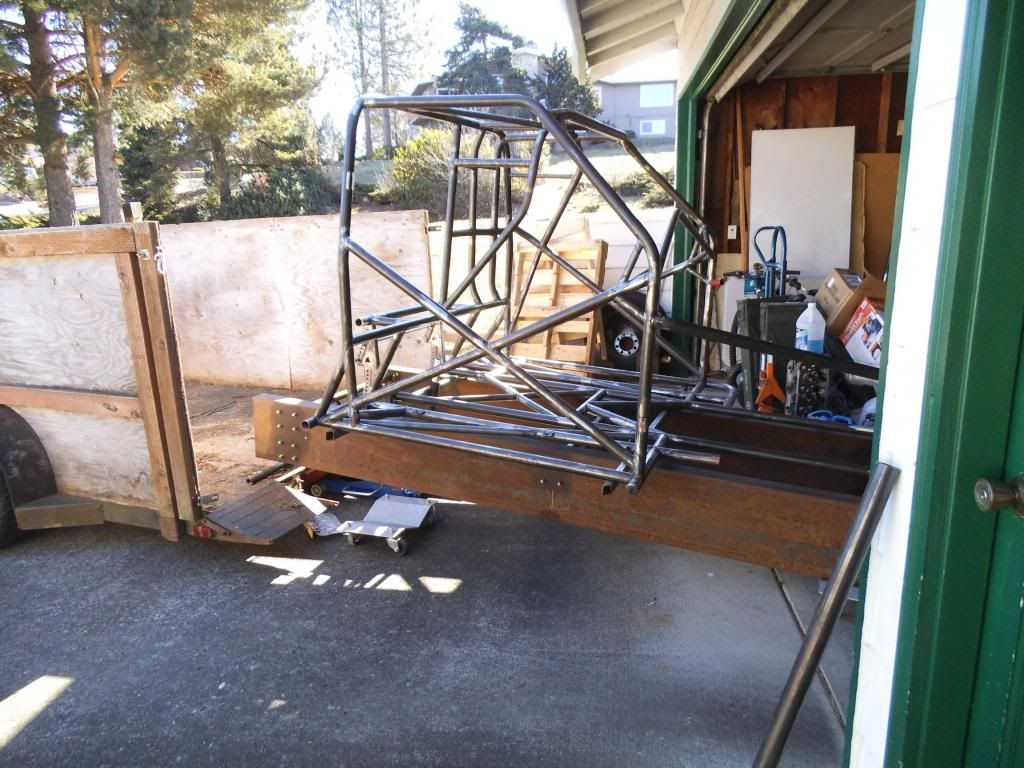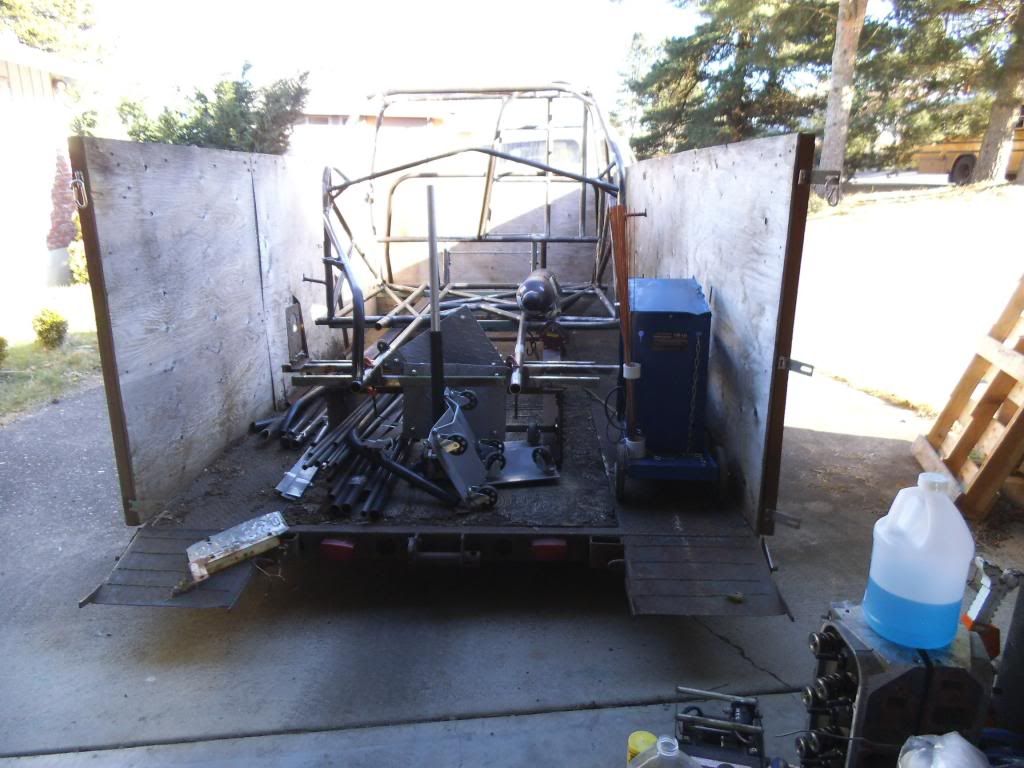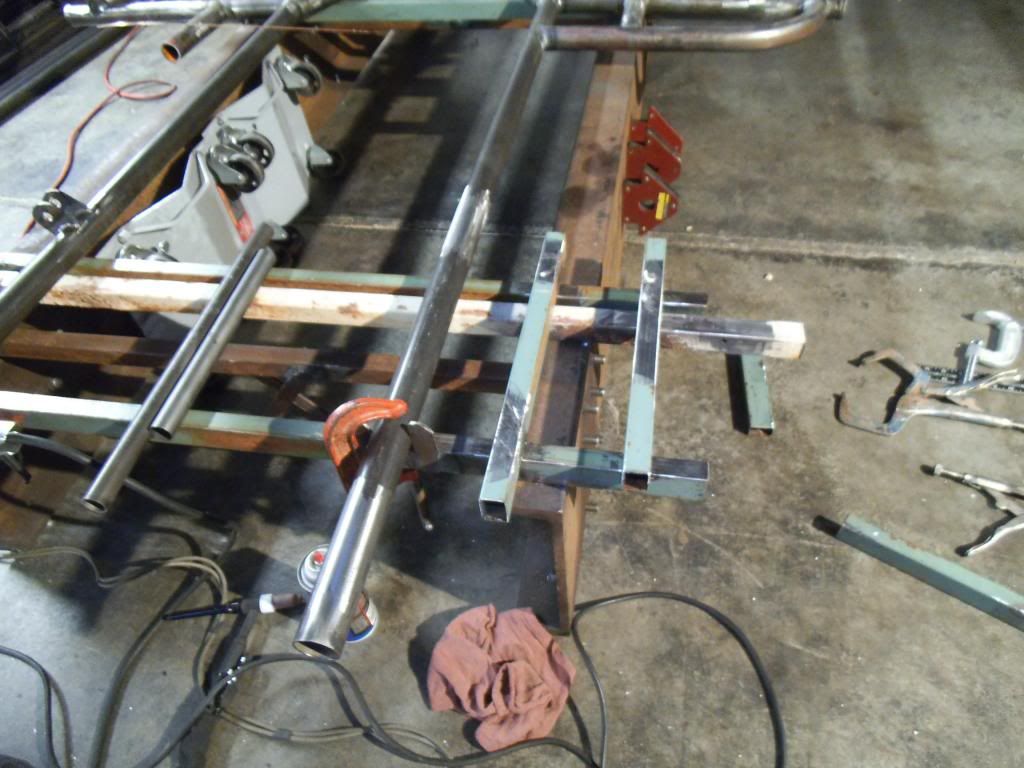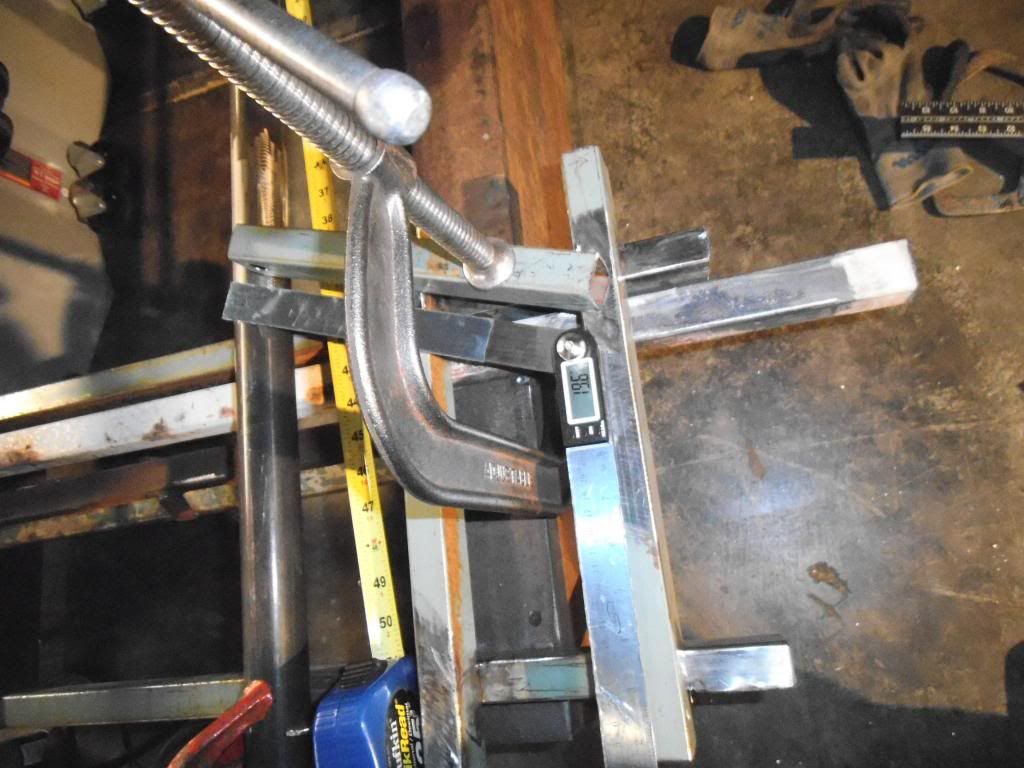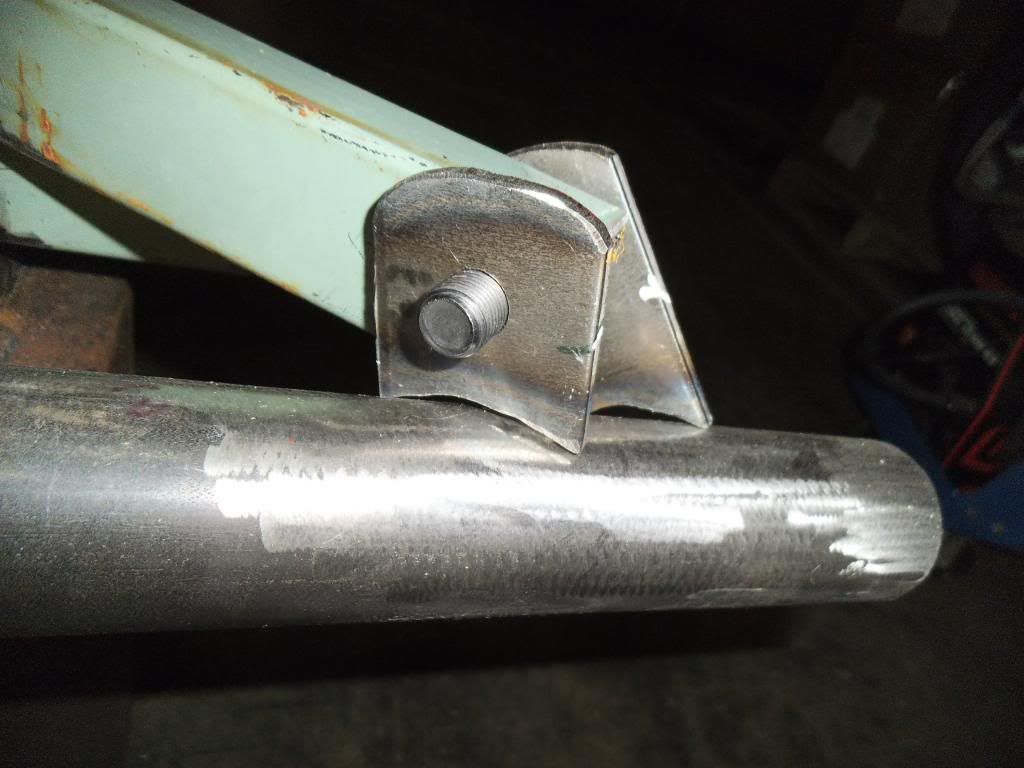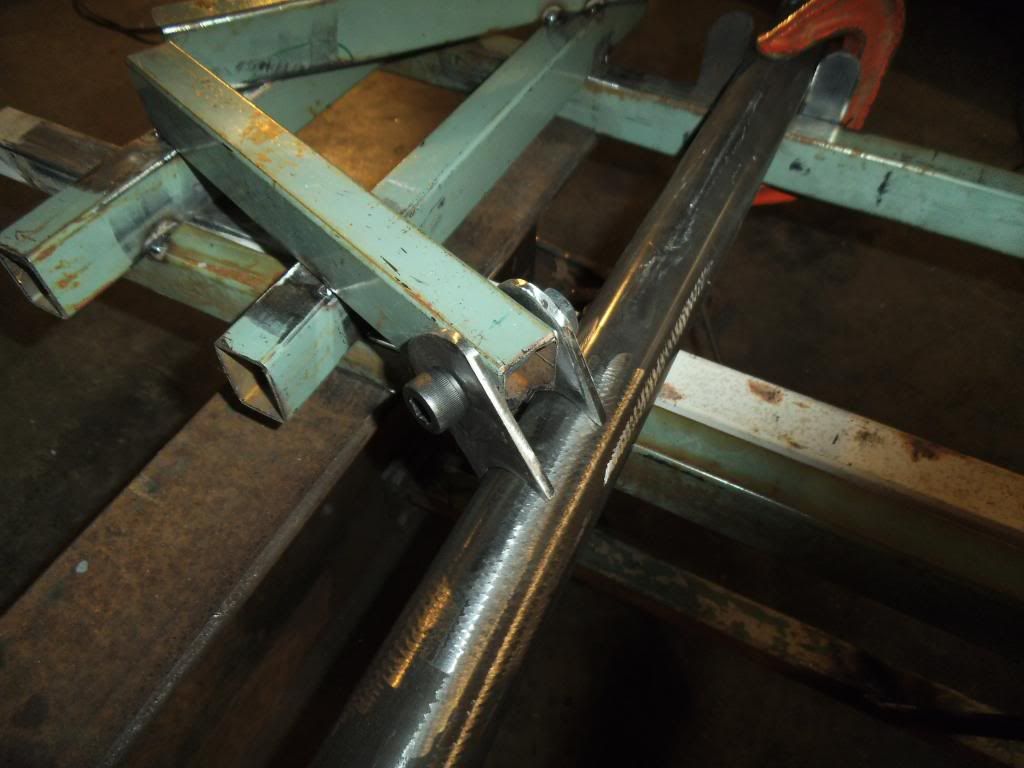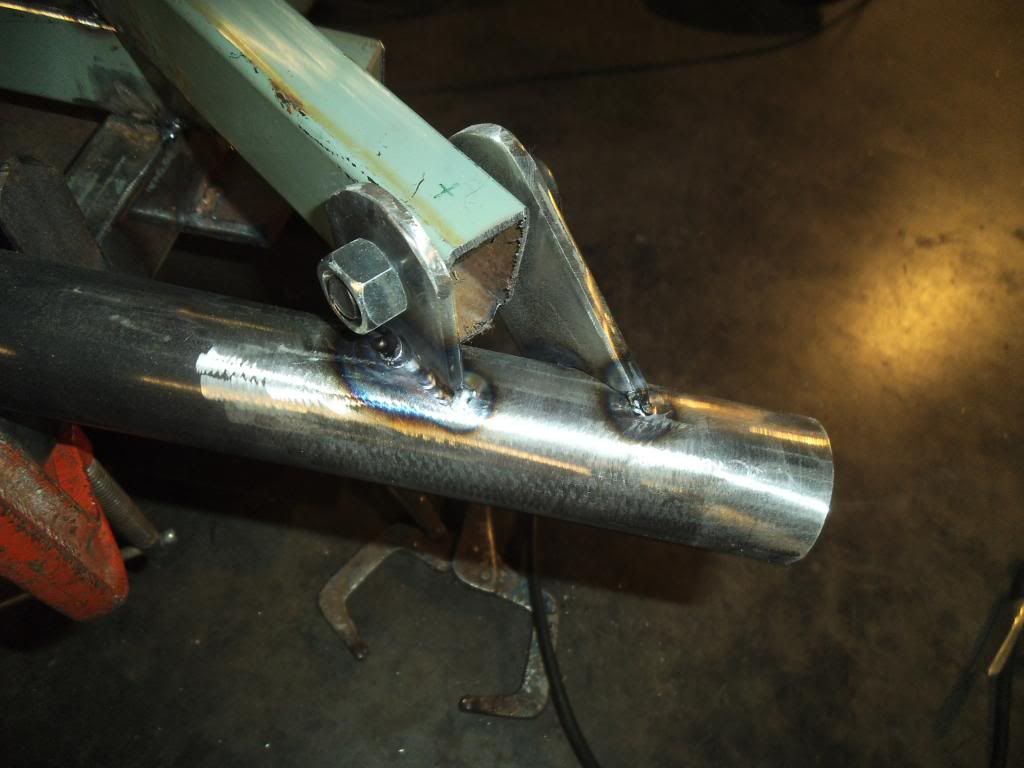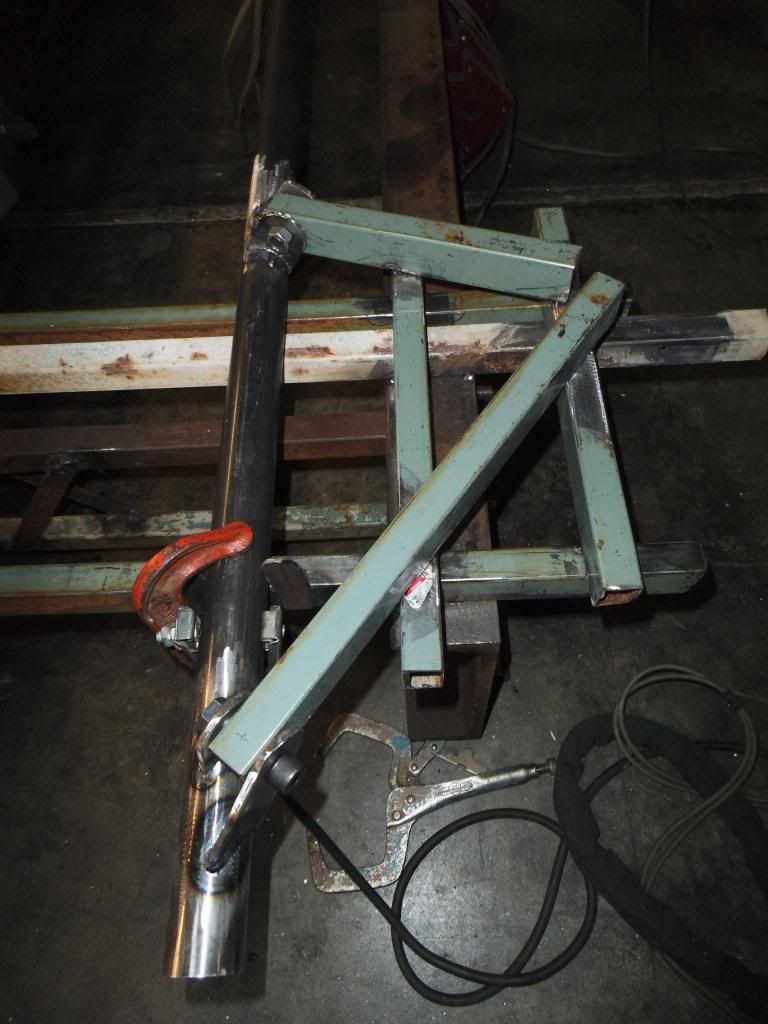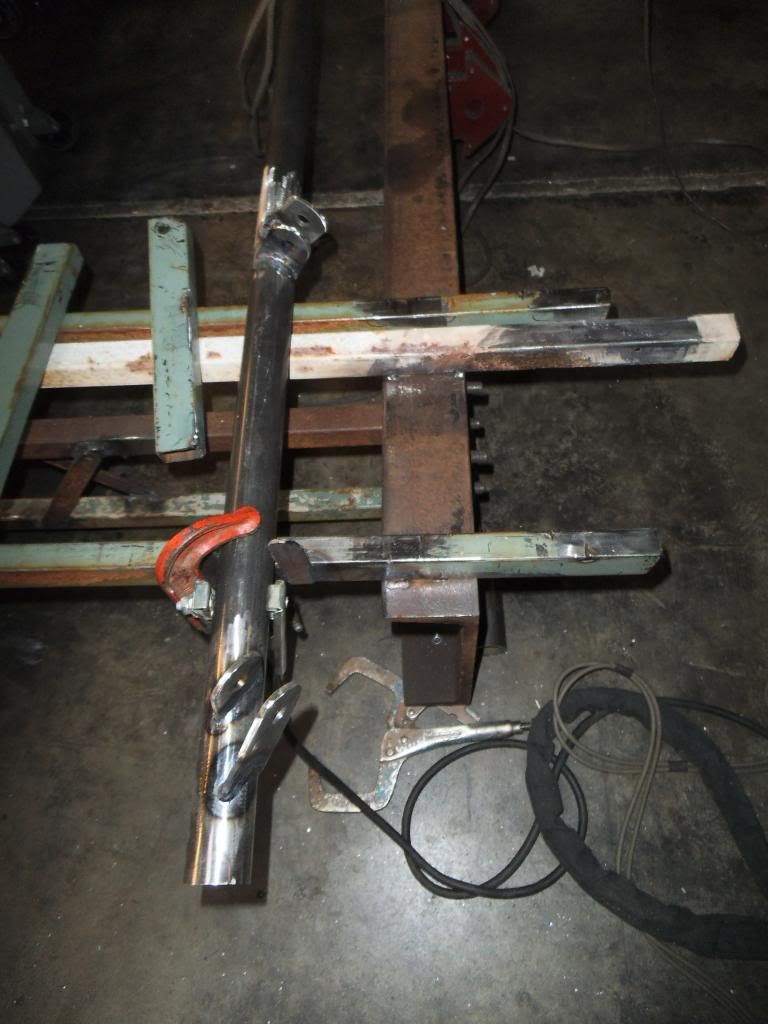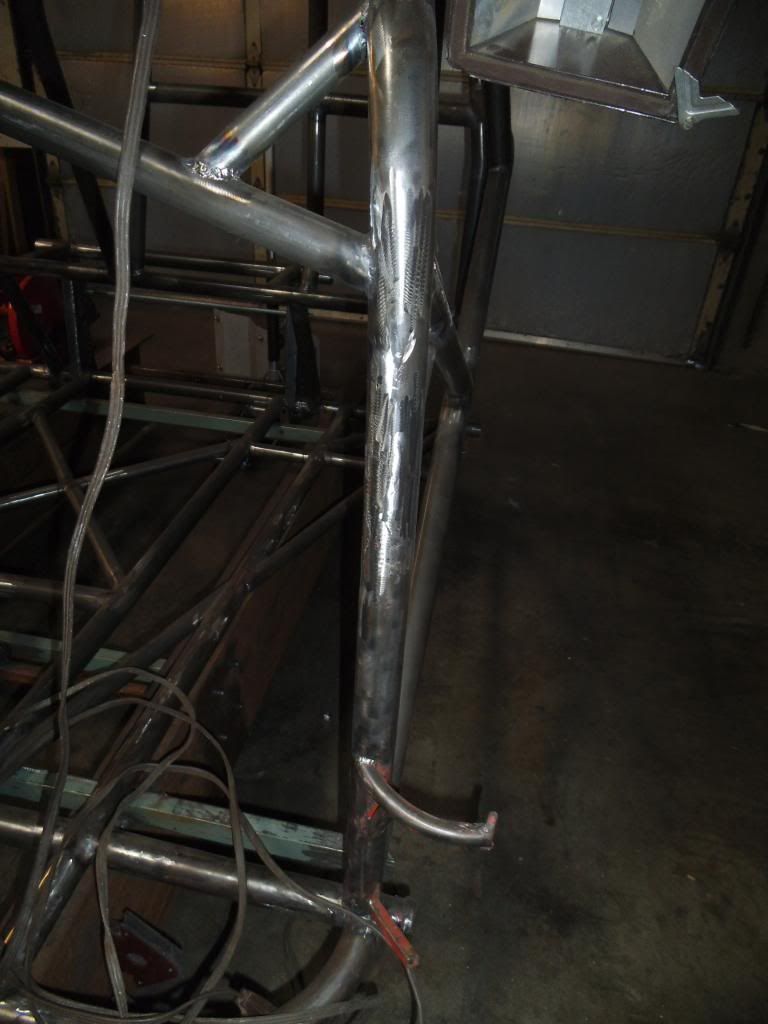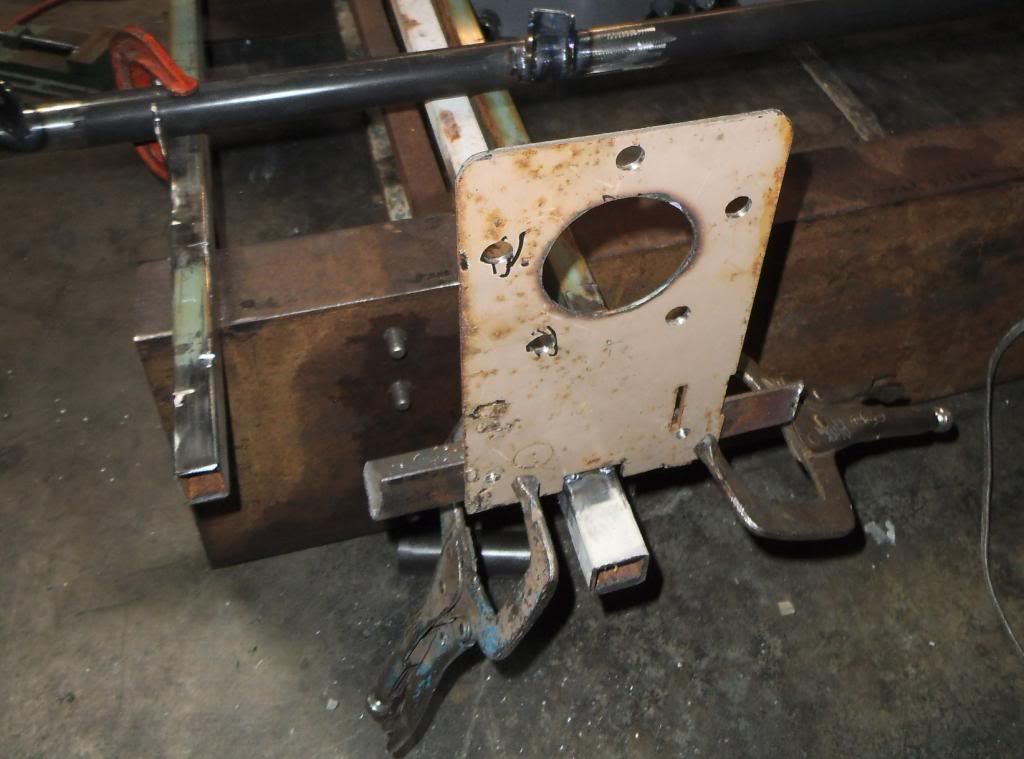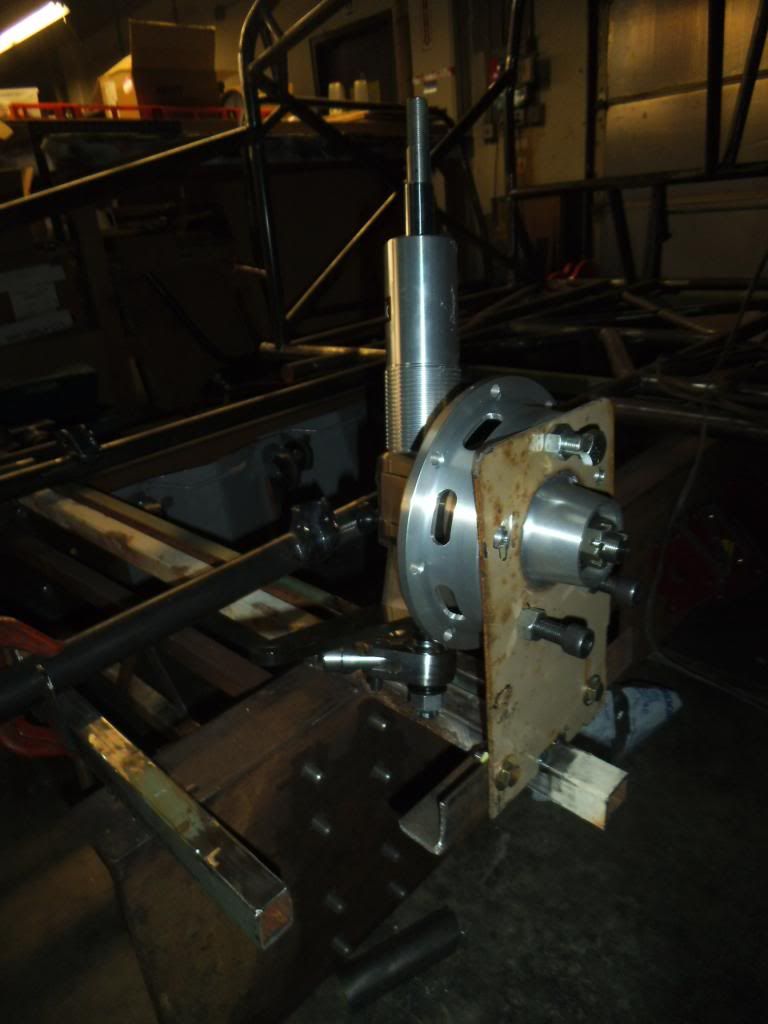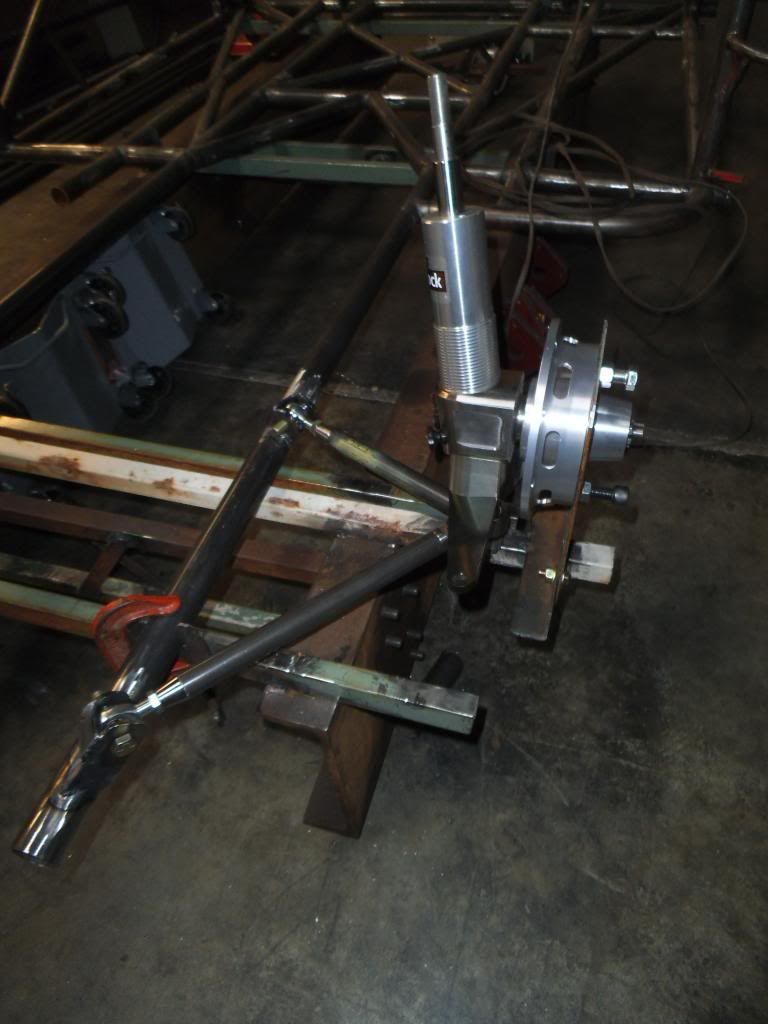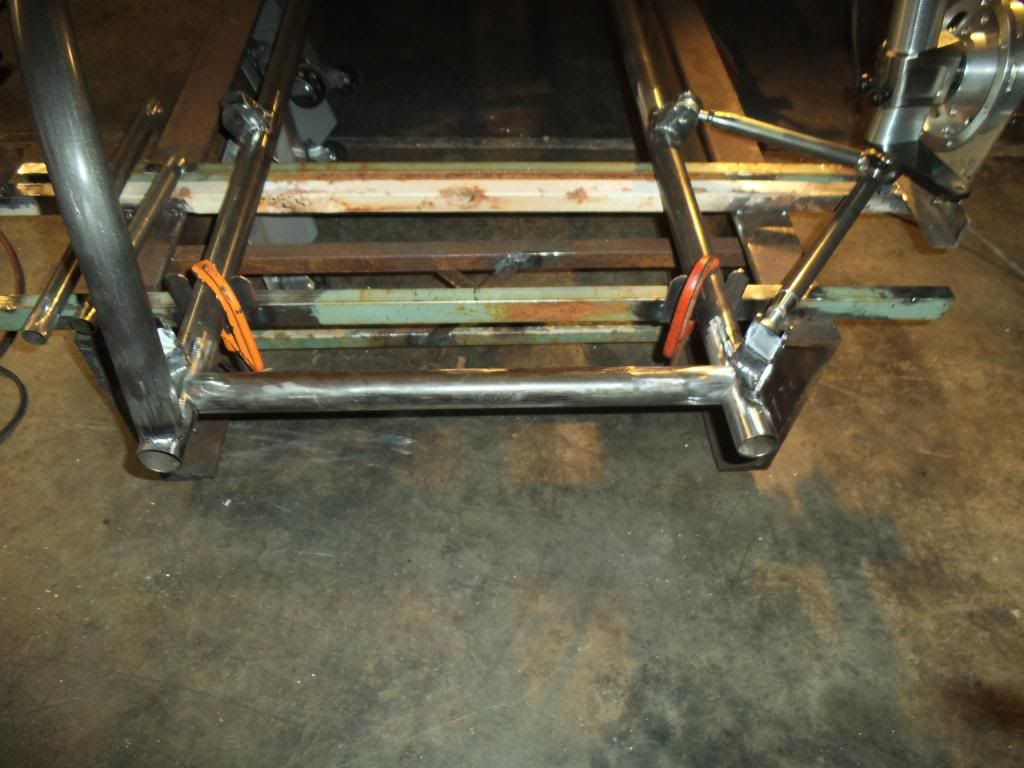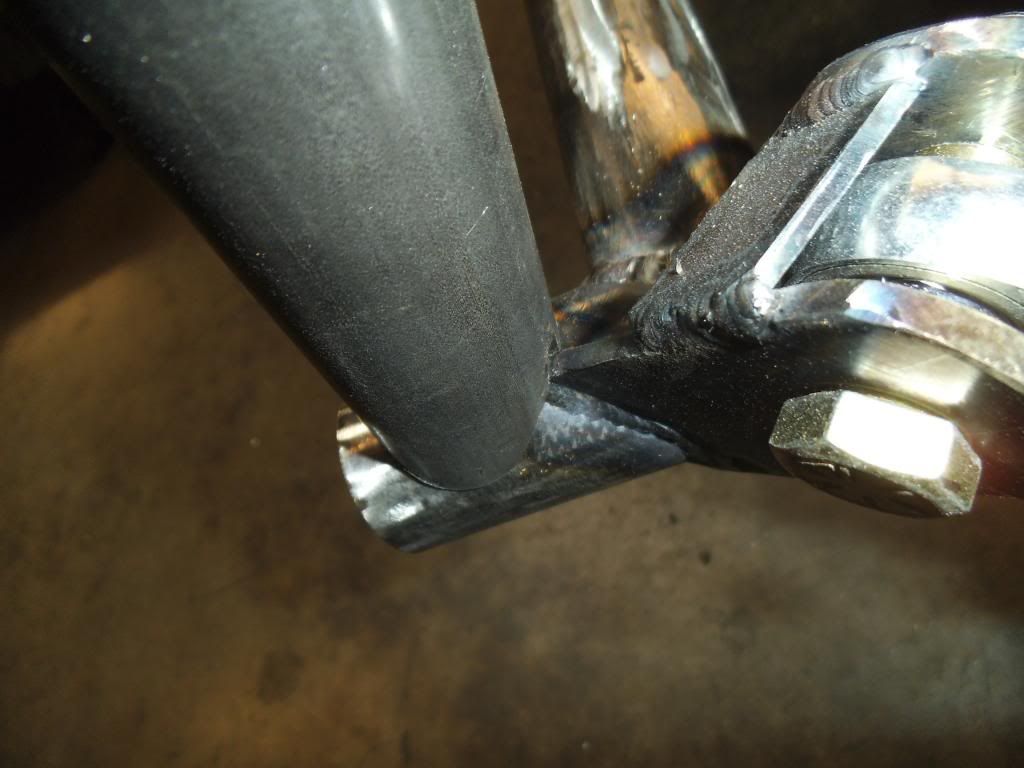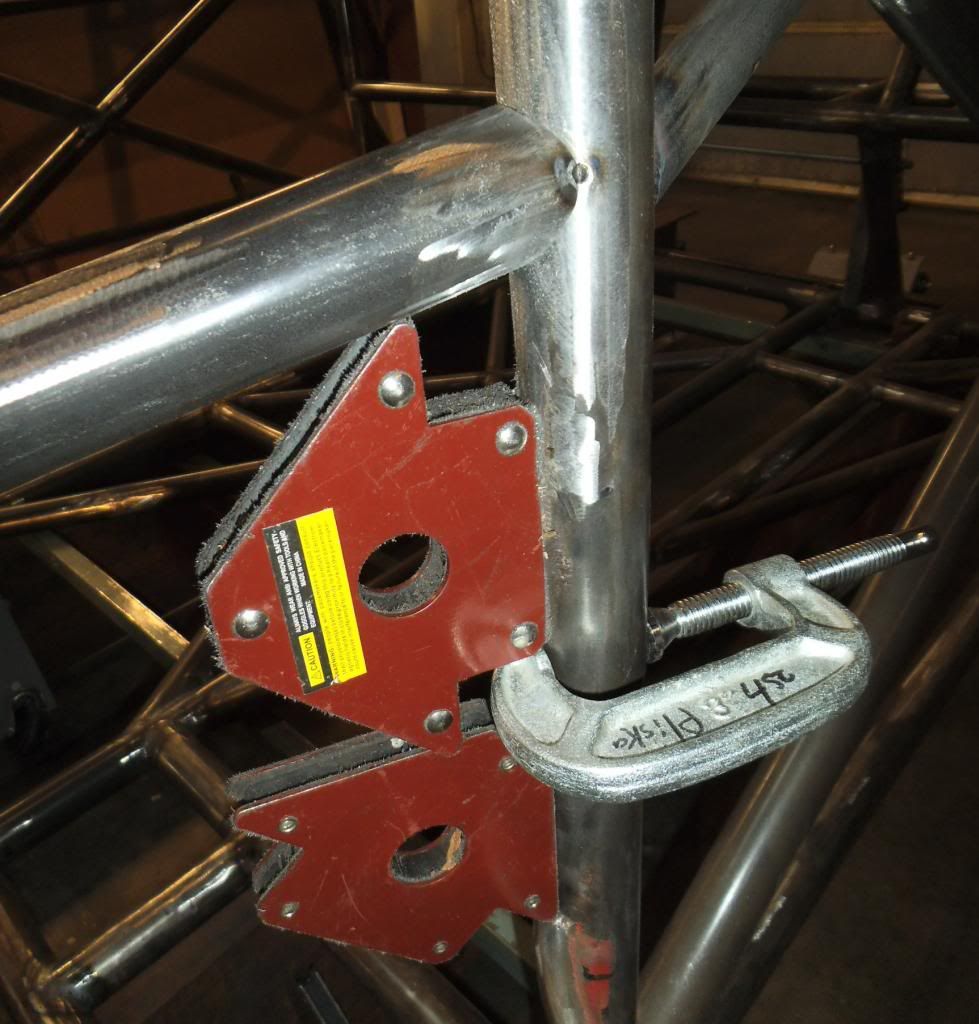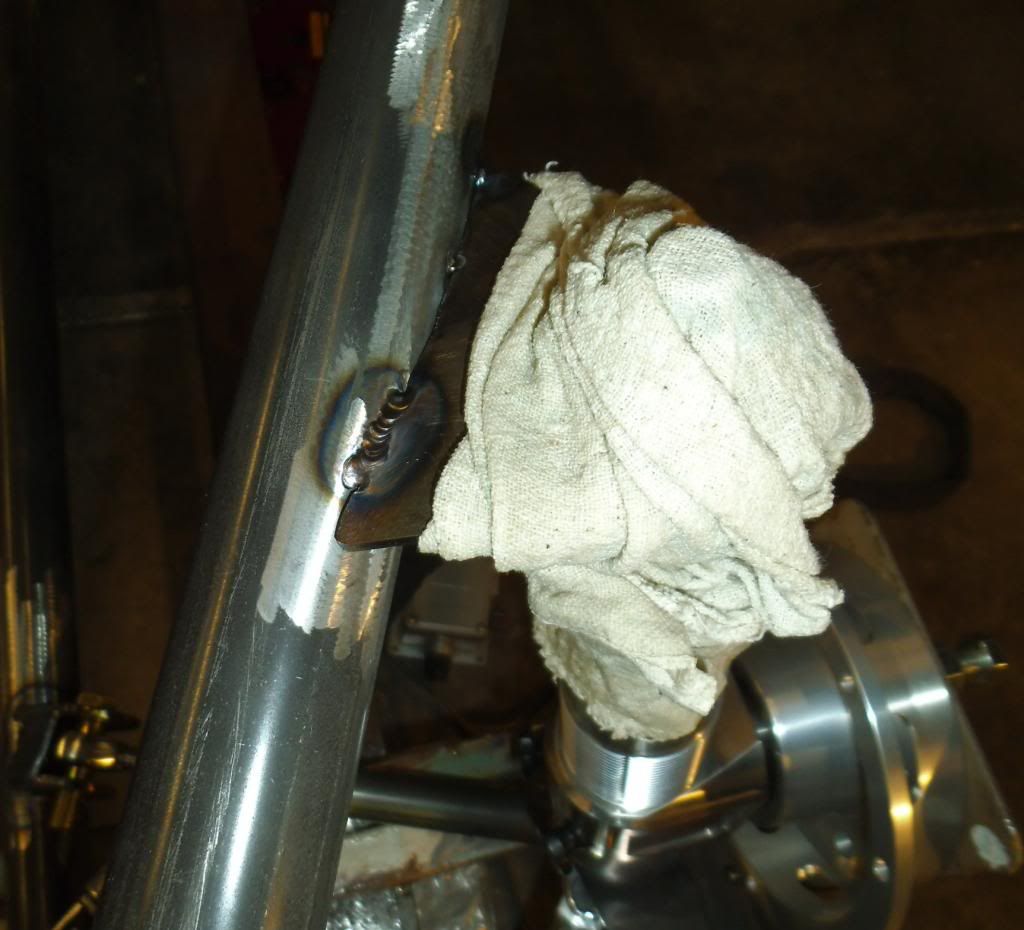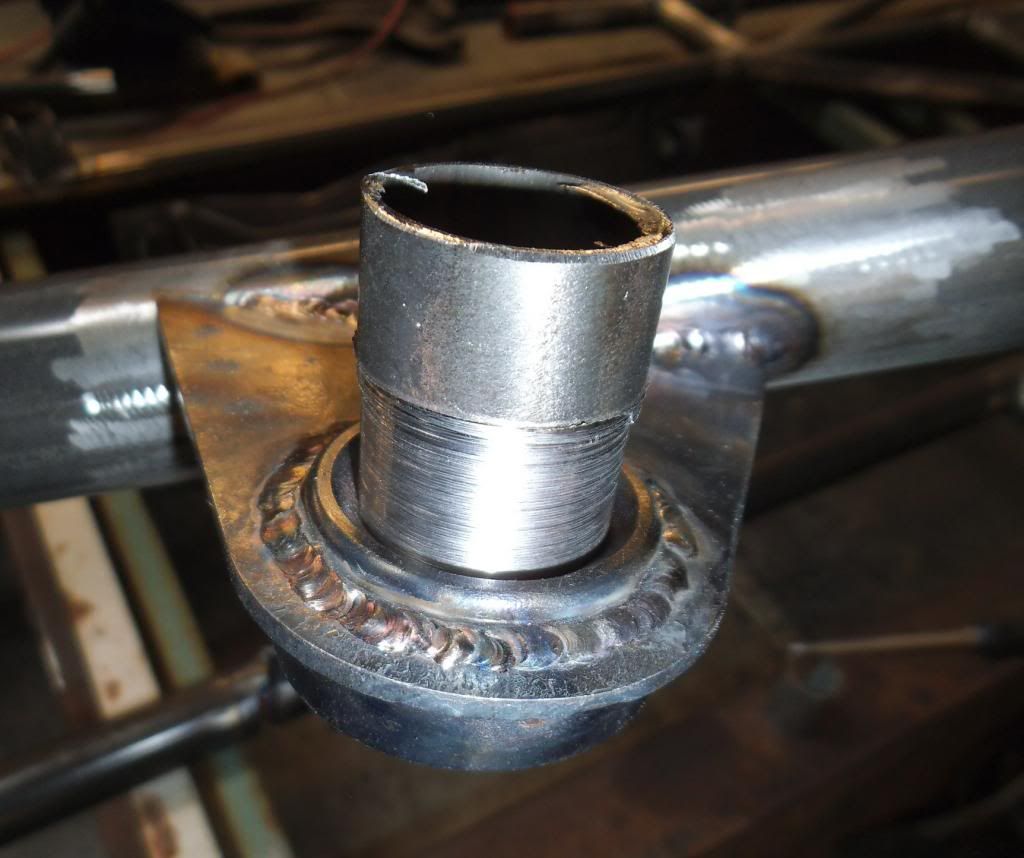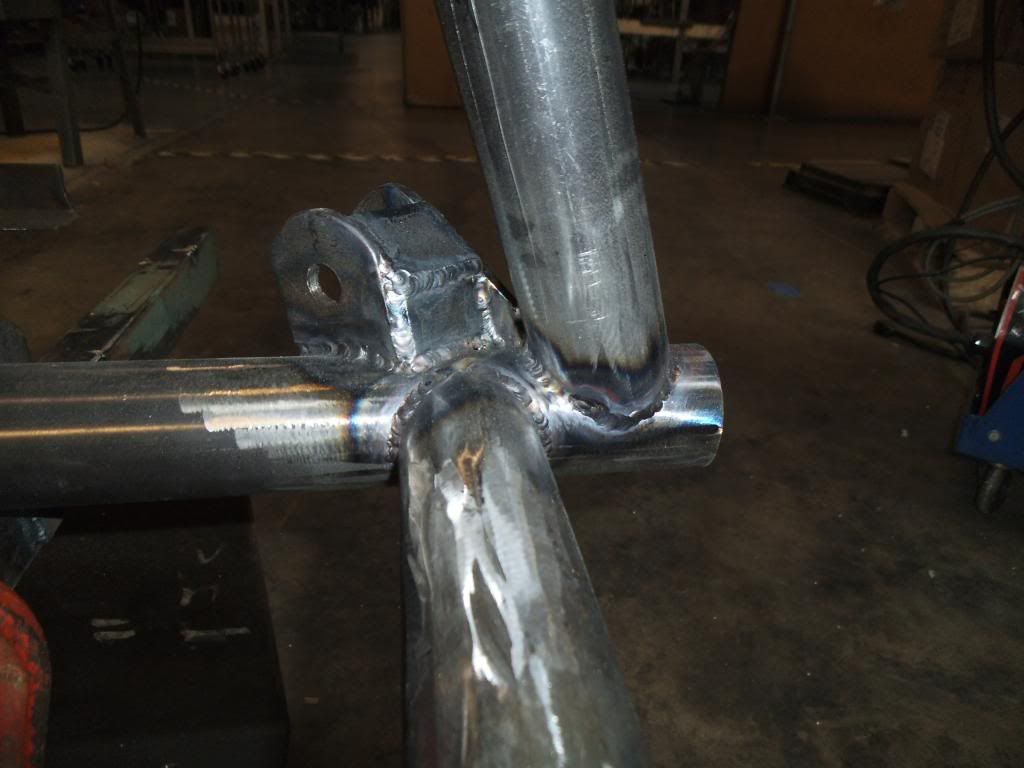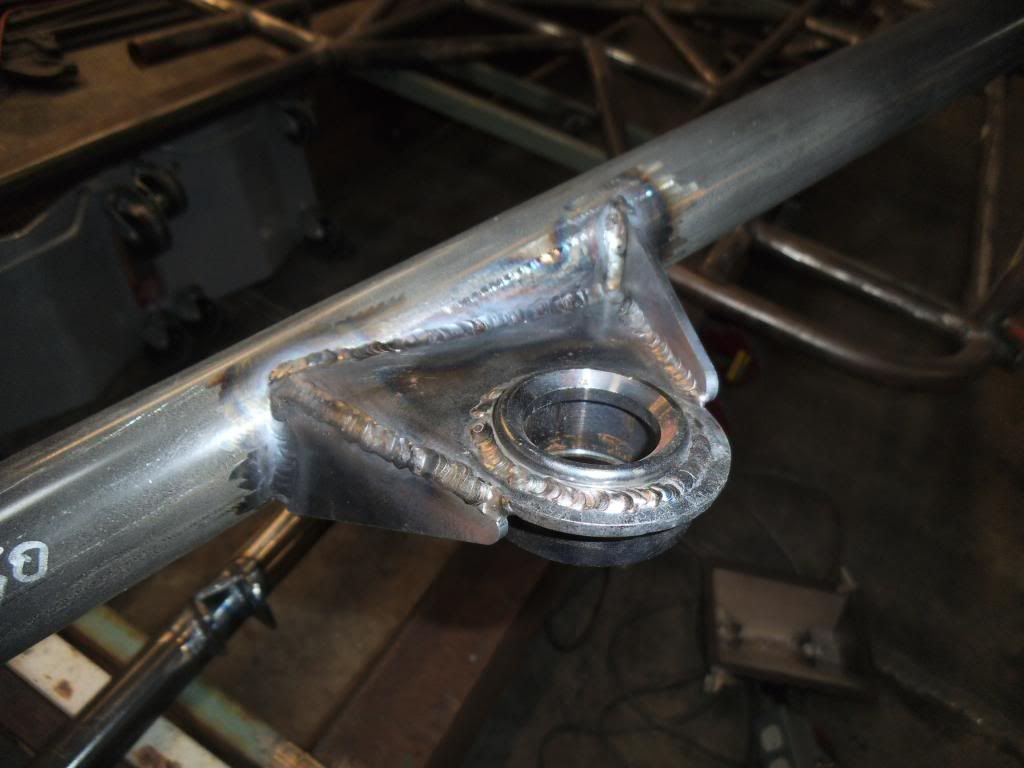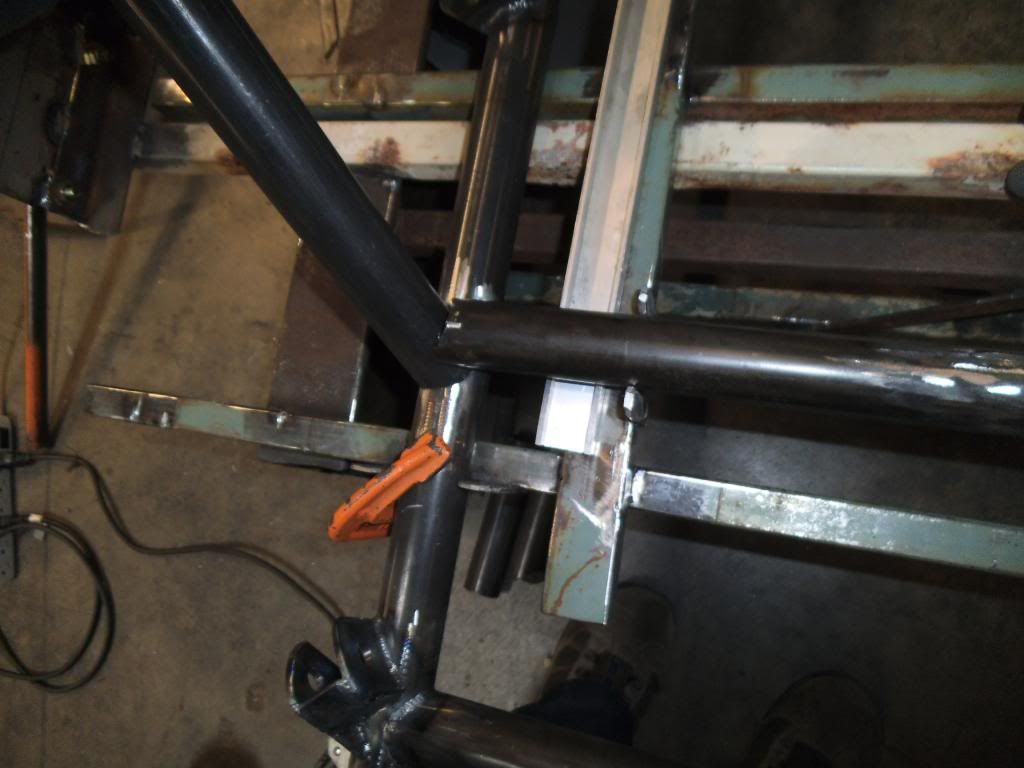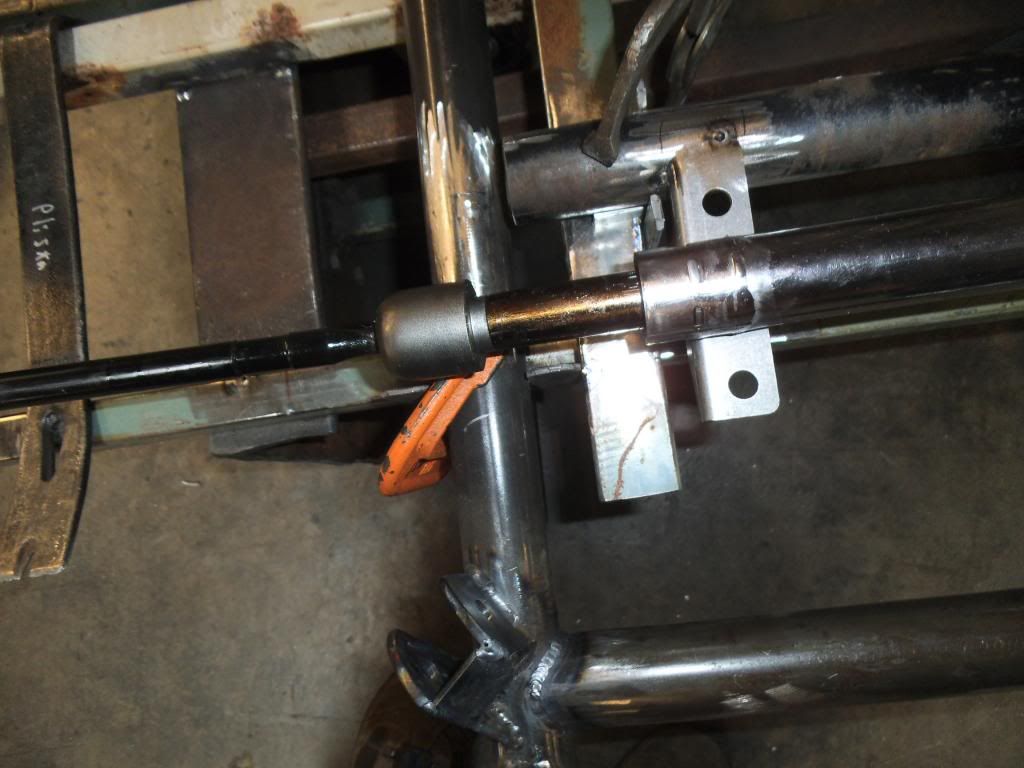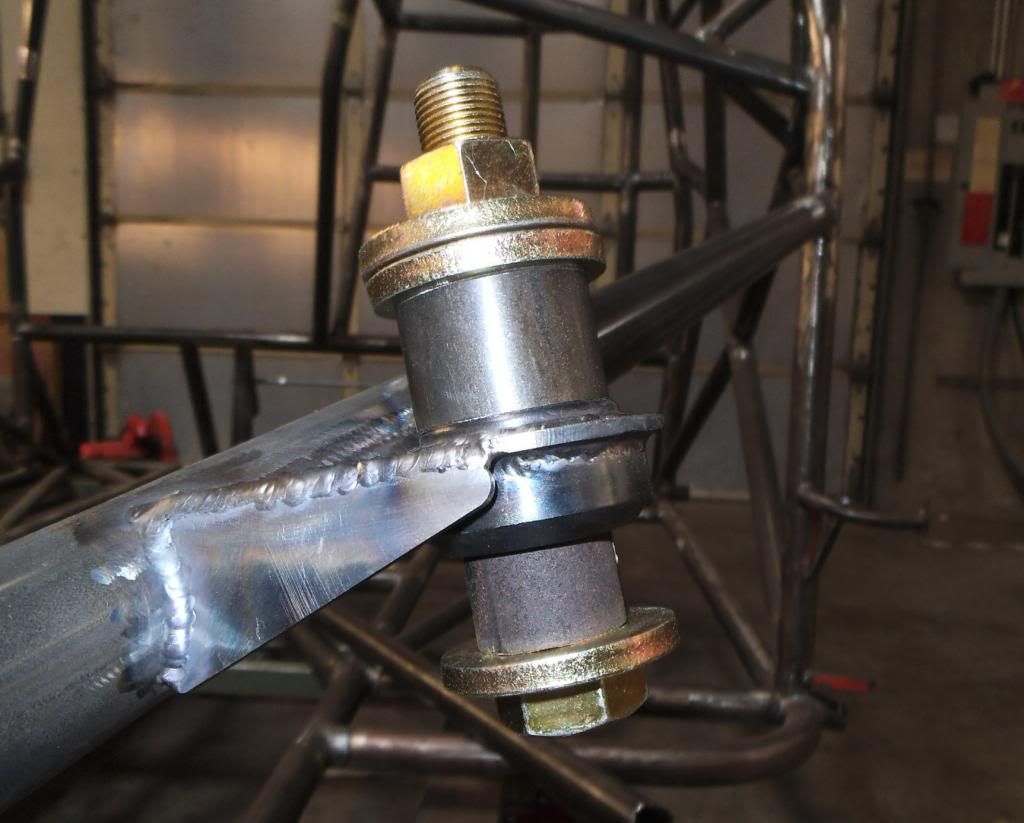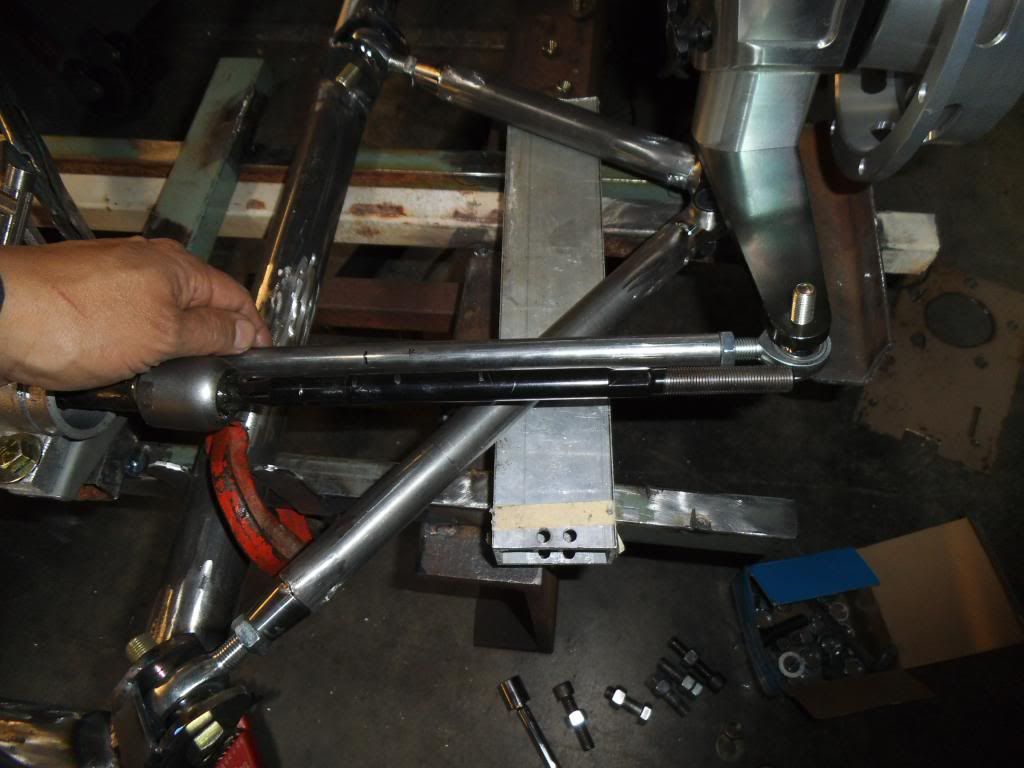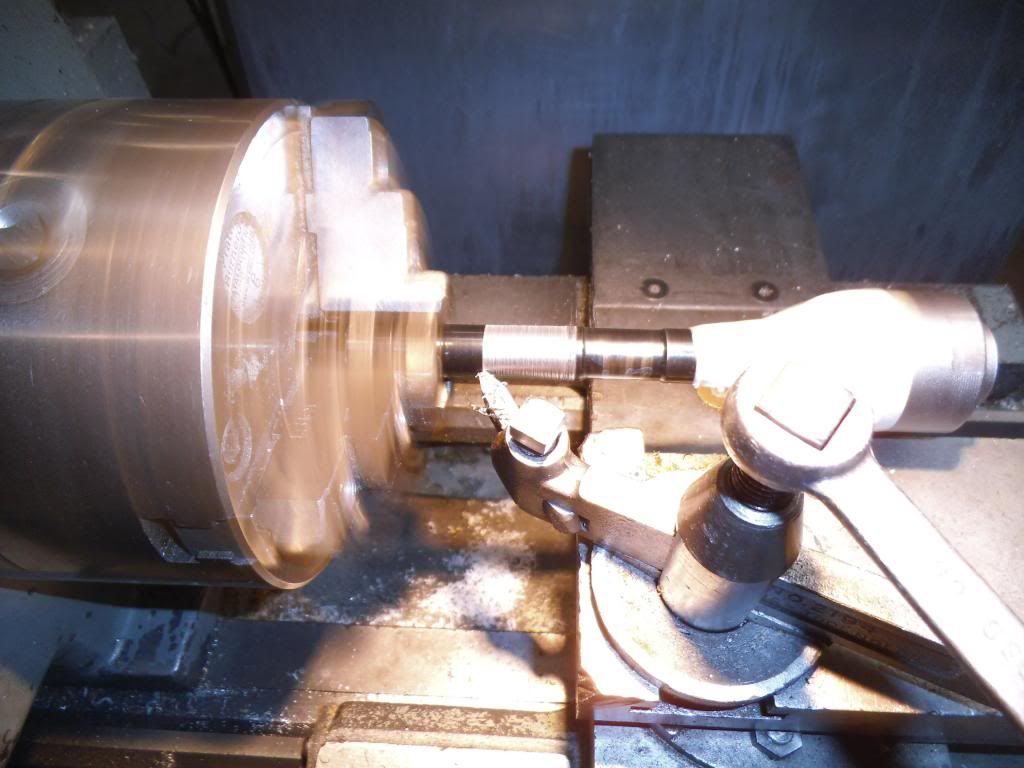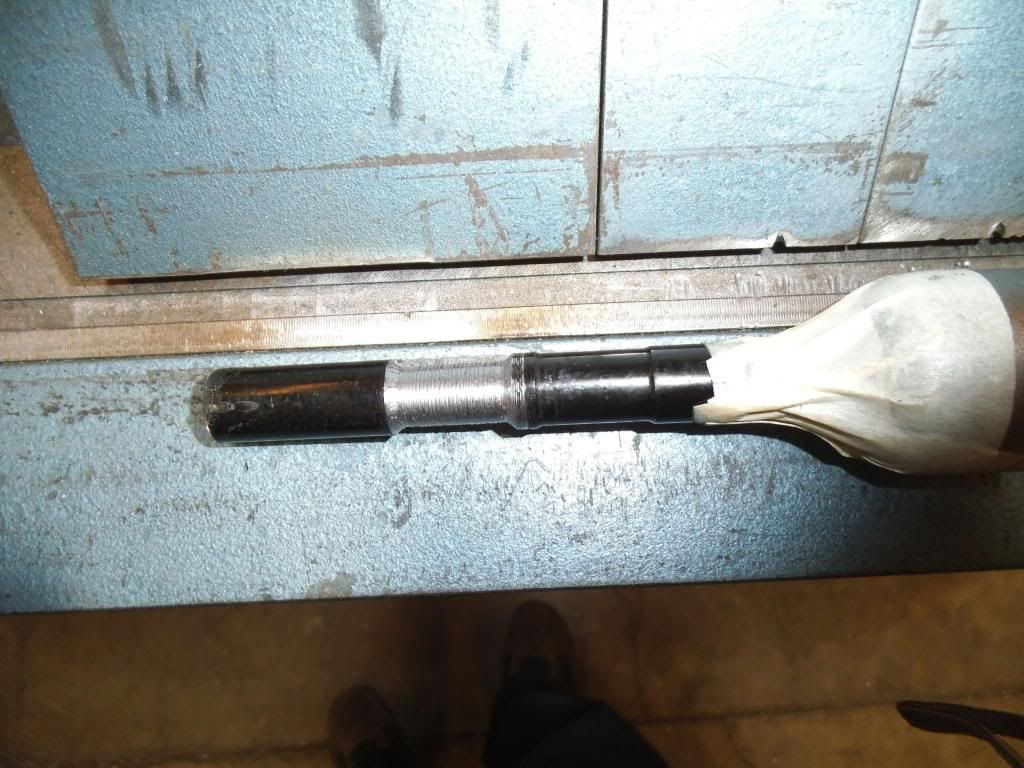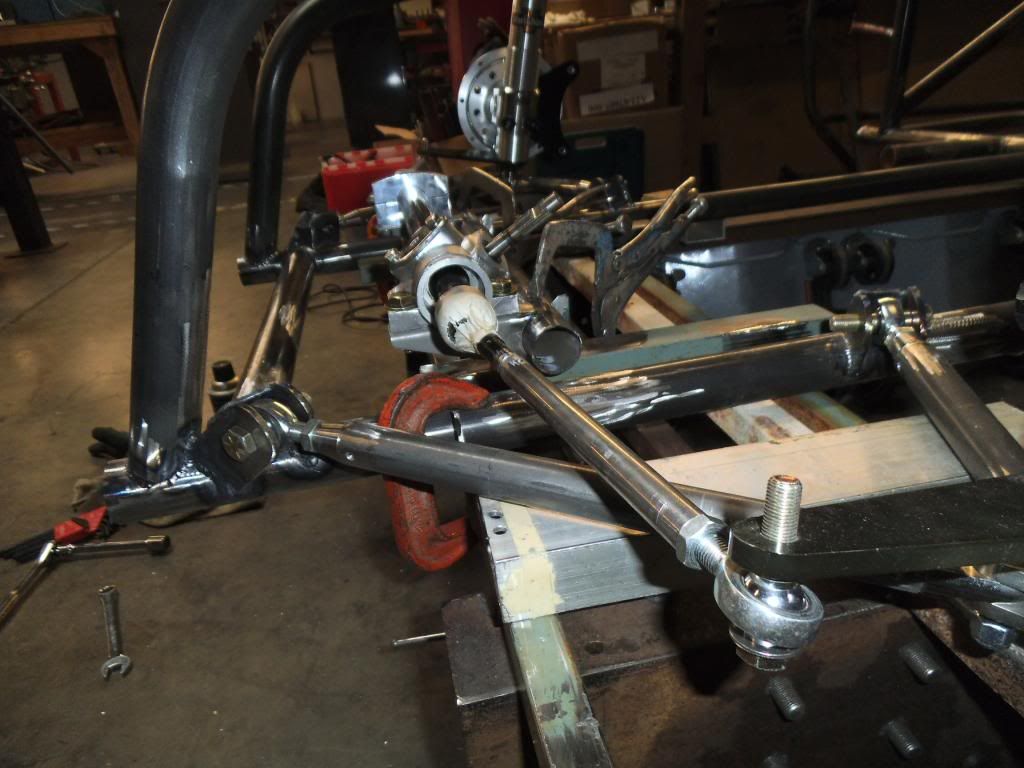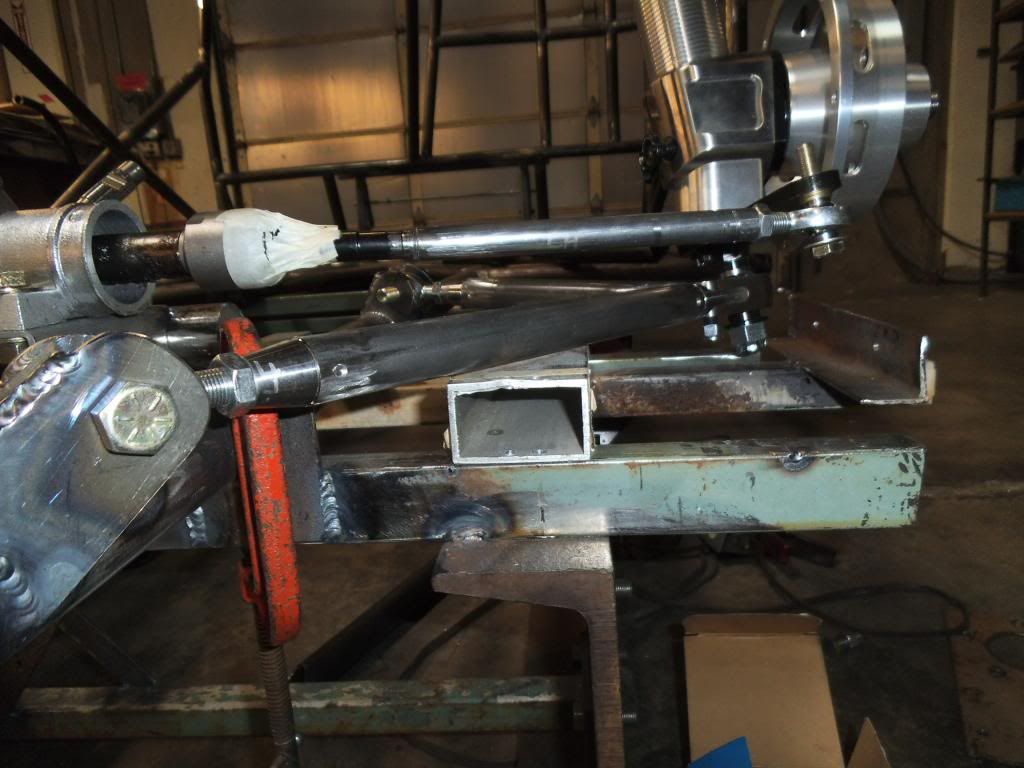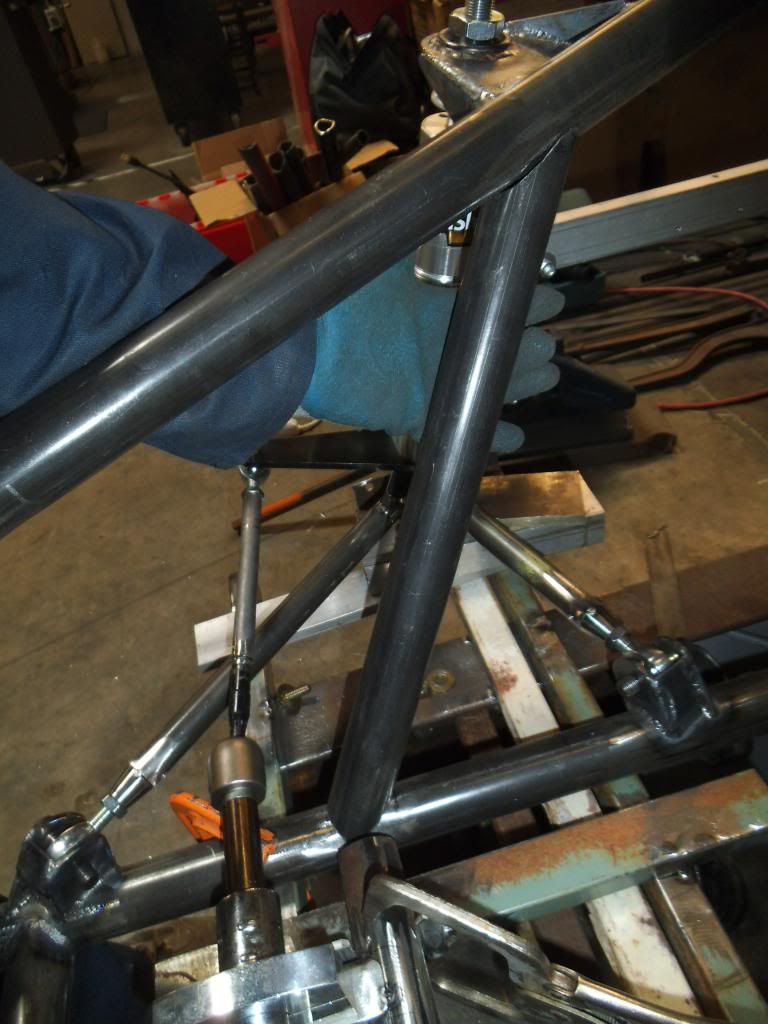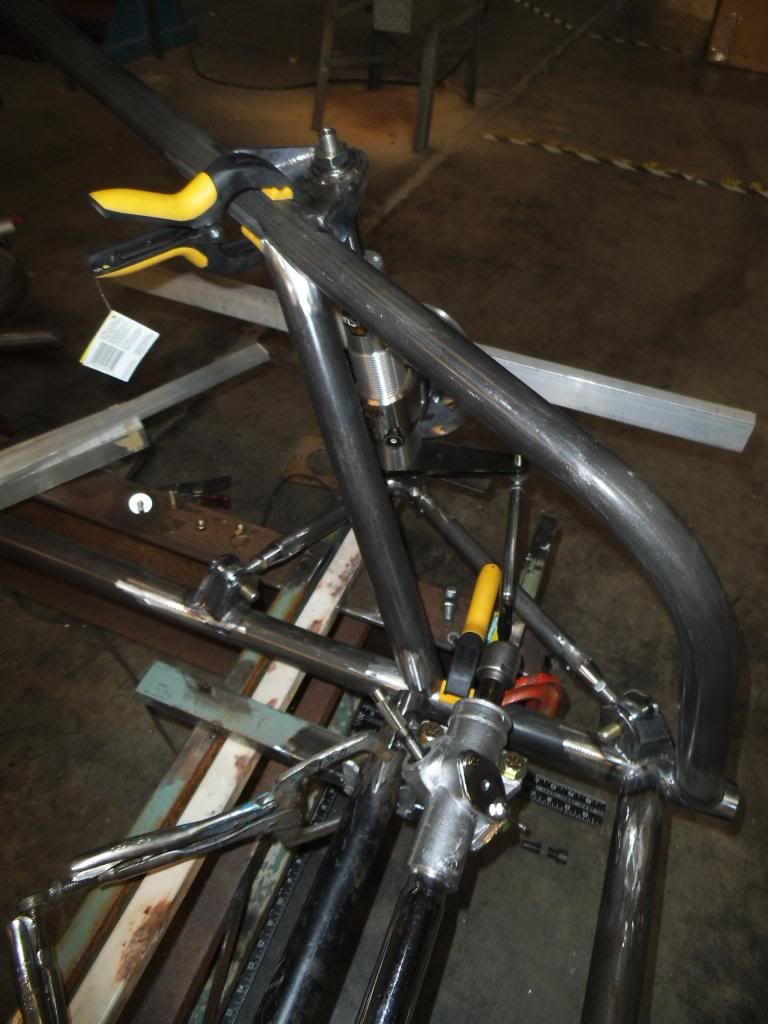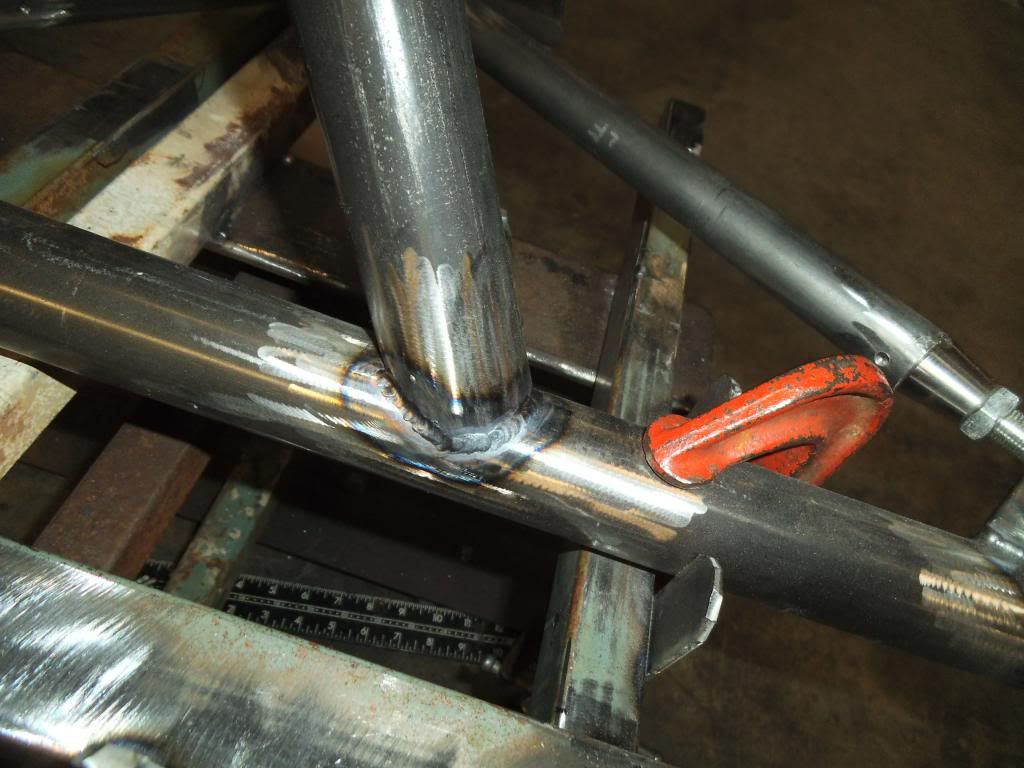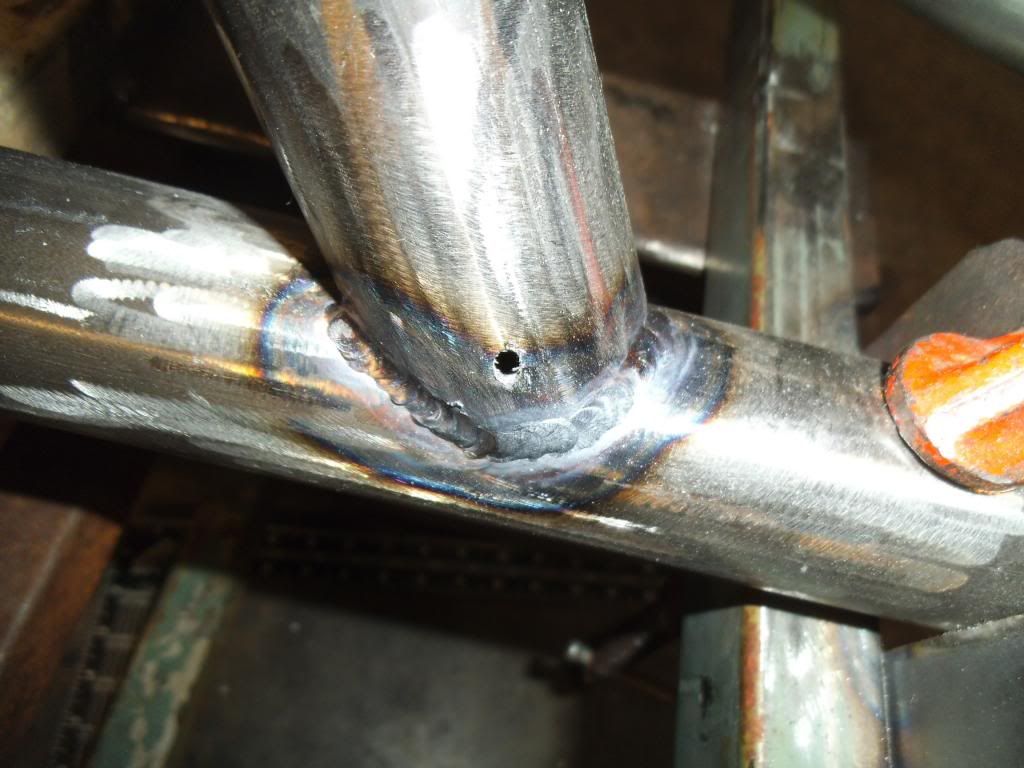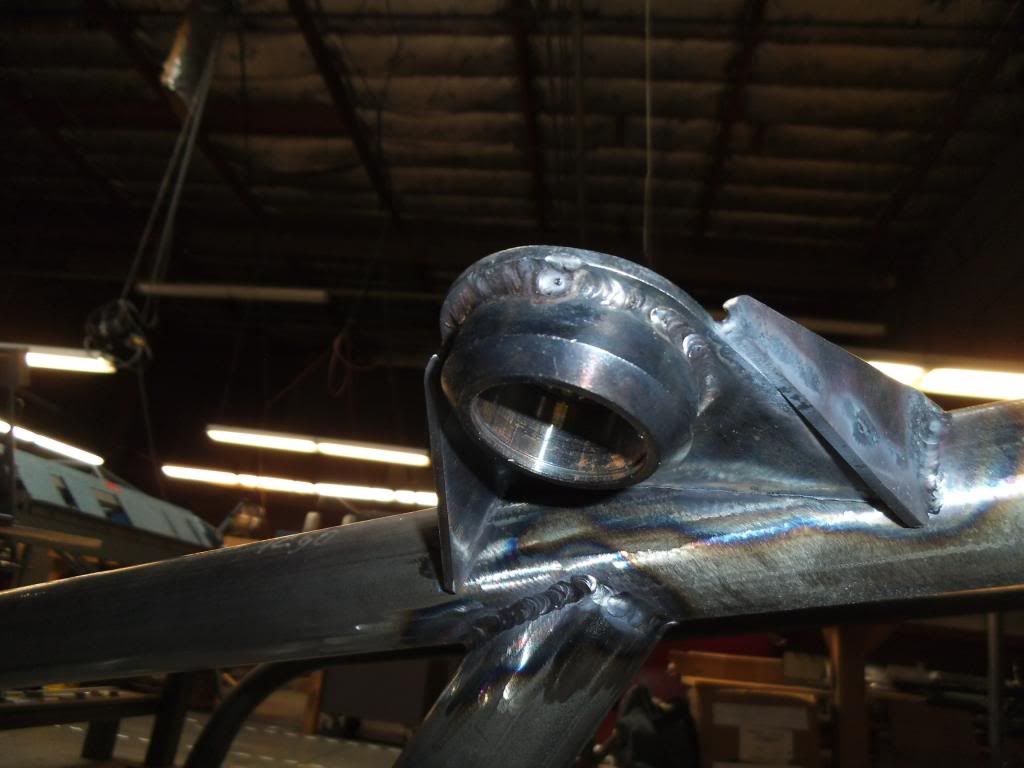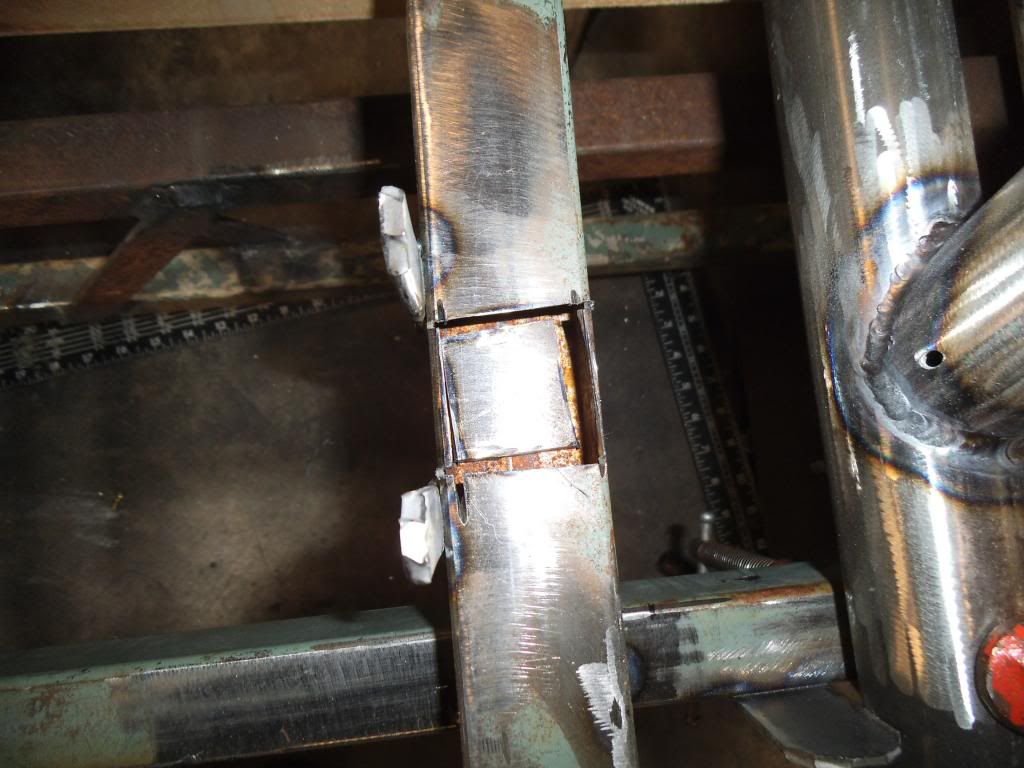Episode 19:
After that thrilling cliffhanger I'm sure you were all wondering what was next? Okay, maybe "thrilling cliffhanger" is really "slightly more interesting than someone's Grumpy Cat Internet Meme"...
I had discussed with my employer (ISSPRO) the possibility of bringing the chassis to work. This would serve two main purposes:
1) I could sneak back on breaks and get in some work on it during the day, and
2) I could avoid the inevitable frostbite-countering warm-up breaks from working in my freezing garage, and the potential of toe amputation from said frostbite.
In addition, I would have more workspace (it was starting to get cramped as the chassis is growing to full length), I could use the forklift for lifting & rotating the chassis to weld underneath, I could use one of our Bridgeport mills for machining brackets, and I could pick my daughter up from school in the afternoons (I'm a single dad with custody) and come back to work on it in the evenings. The plan was to work while she does her homework in a nearby office and I am available to verbally help her while continuing the fabrication process. That last part hasn't worked out quite as well as planned, with Caitlyn usually wanting to hang out in my office (where she spends more time doodling on my whiteboard than actual homework).
I decided to transport the chassis & the jig clamped together, figuring the chances of both making it intact would be improved with each reinforcing the other. Of course it also meant trying to move a nearly 2000 lb bunch of steel without wheels by myself! I jacked it up in my garage and placed it on wheel dollies:
I considered transporting it in my enclosed trailer, winching it up the ramp door, but my sloping lot would require me to get it up my steep driveway first (and I was working alone on a rather cold day). I decided to use my flatbed trailer with sideboards on to help hold in all the other crap I would be bringing.
I wheeled it up to the trailer, then used the floor jack to get the 1st end onto the trailer.
I forgot to take a picture of it, but I had previously been using the trailer for hauling firewood, and hadn't cleaned out the small pieces in a while. They formed a pretty big layer on the floor of the trailer, which was now frozen solid. I ended up spending an hour in the freezing weather chipping away at the pile so I could see the floor again.
At this point I used an old trick from moving safes out of grocery stores (dismantling the stores, NOT stealing the safes

). I used a couple of pieces of tubing as rollers, between the jig and the floor of the trailer. This was why I had to get the floor cleaned up!
Once I had the 1st roller up there it was relatively easy to push it up by hand.
After tying the jig & chassis down I packed in all of the remaining tubing, plus my welder, Argon bottle (securely strapped to the chassis), and a bunch of other tools.
Of course the door to the spot where they cleared out for me to work on it was a pain to get to (one of those spots where it takes a complete jacknife of the trailer), but I did it.
Unloading was just a reverse of the loading process. I thought about using the forklift, but it would have meant effectively "painting myself into a corner" backing the lift into a spot up against some machinery.
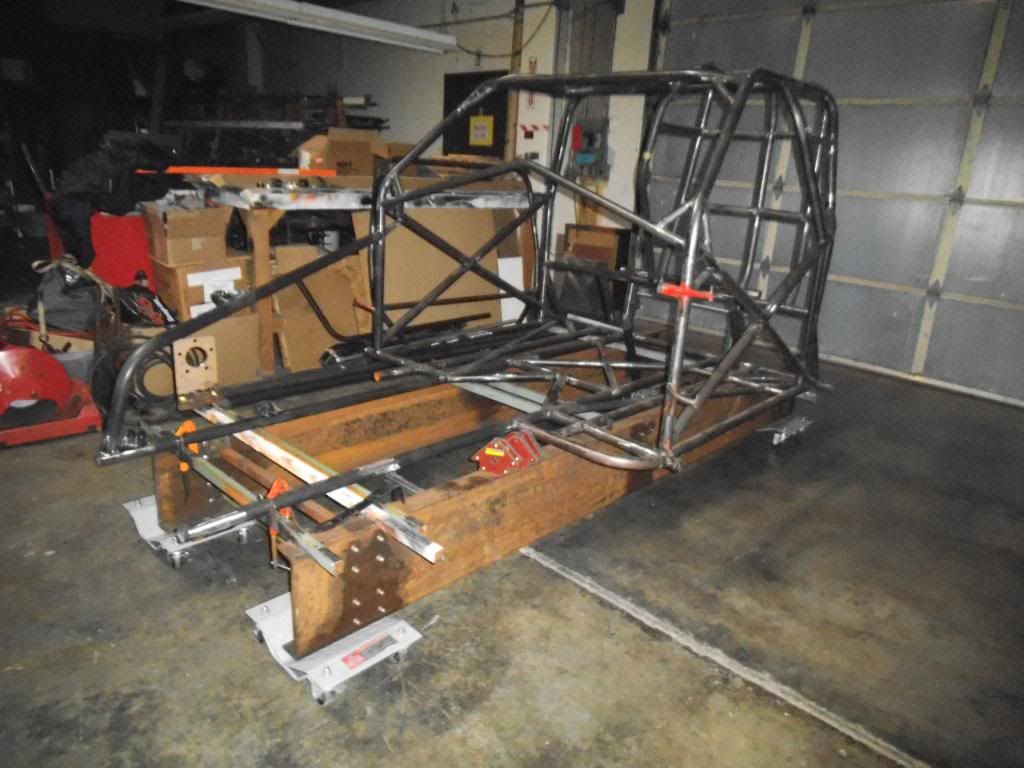
Of course my luck with this project continued. The next morning after moving the chassis and tools, there had been a forecast for possible light flurries. Instead what we got was a 5 day "Snowpocalypse", which would have barely slowed a Northern or Midwestern city but paralyzed our city. My plan was to use my old '73 Blazer to get into work (if it got too deep for my Jetta with snow tires & chains). I verified that my Jetta could not make it on the hills around my house and turned to the formerly trustworthy Blazer. That night I parked it with its nose and windshield under the overhang of my camper, thinking I was being smart and keeping the snow off of it. When I went to fire it up in the morning it would not start, and it was so pinned in that I could barely open the hood. After pushing it back as far as I could by hand, I was able to swap a bigger battery in, and discovered that it was not getting spark. It turned out to be a failed electronic ignition module (GM HEI distributor), and with the Pontiac 400 engine swapped into the Blazer it is a VERY tight fit working on that distributor even if you can get the hood all the way open! I was able to replace it working by feel (crammed into the claustrophobic space under the barely open hood). By this point I had burned up 3 days of the Snowpocalypse, spent another day sledding with my daughter to make up for it, and finally got to work on the chassis again!

With the mounting points for the right front suspension mostly complete, I moved to the left front and started with a pair of jig support bars precisely placed and tack welded down.
From there I precisely placed and tack welded the "dummy" bars for holding the lower control arm brackets in precise 3D space and angle.
At this point I discovered that making the 1st two of those brackets from my 3D model measurements (back when I was making the ones for the other side) was not such a good idea, with minute differences between the real world and my model.
The material for the brackets (like everything else on this chassis) was 4130 CrMo, but in this case it was a strap 3/16" thick a custom width to get the optimal size to get full engagement with the tubes and angles in question. Fortunately when I custom sheared these strips from plate stock I made extra! And since the four pieces are varying lengths, I could replace the longest one and use each piece to replace the next shorter one while leaving me enough length to get a precise zero-gap fit-up.
While intermittently fitting up those pieces I also welded the remaining supports on the right front strut upper mount, just welding 3/4" at a time to avoid weld draw.
The front outside mount in this picture was the most difficult one to fit with its weird compound angles, but I just went VERY slowly with metal removal until it fit!
The rears were a little less work since the angles weren't as severe.
At this point I was ready to start tacking them in place:
Unfortunately it was also time to lose another week on the project, as ISSPRO is displaying at the ConExpo trade show all week in Las Vegas. Thankfully this show is only once every 3 years, but of course it had to fall right as I was starting to make good progress again! I guess I'd better make sure to finish the project before the next ConExpo in 2017!!!

